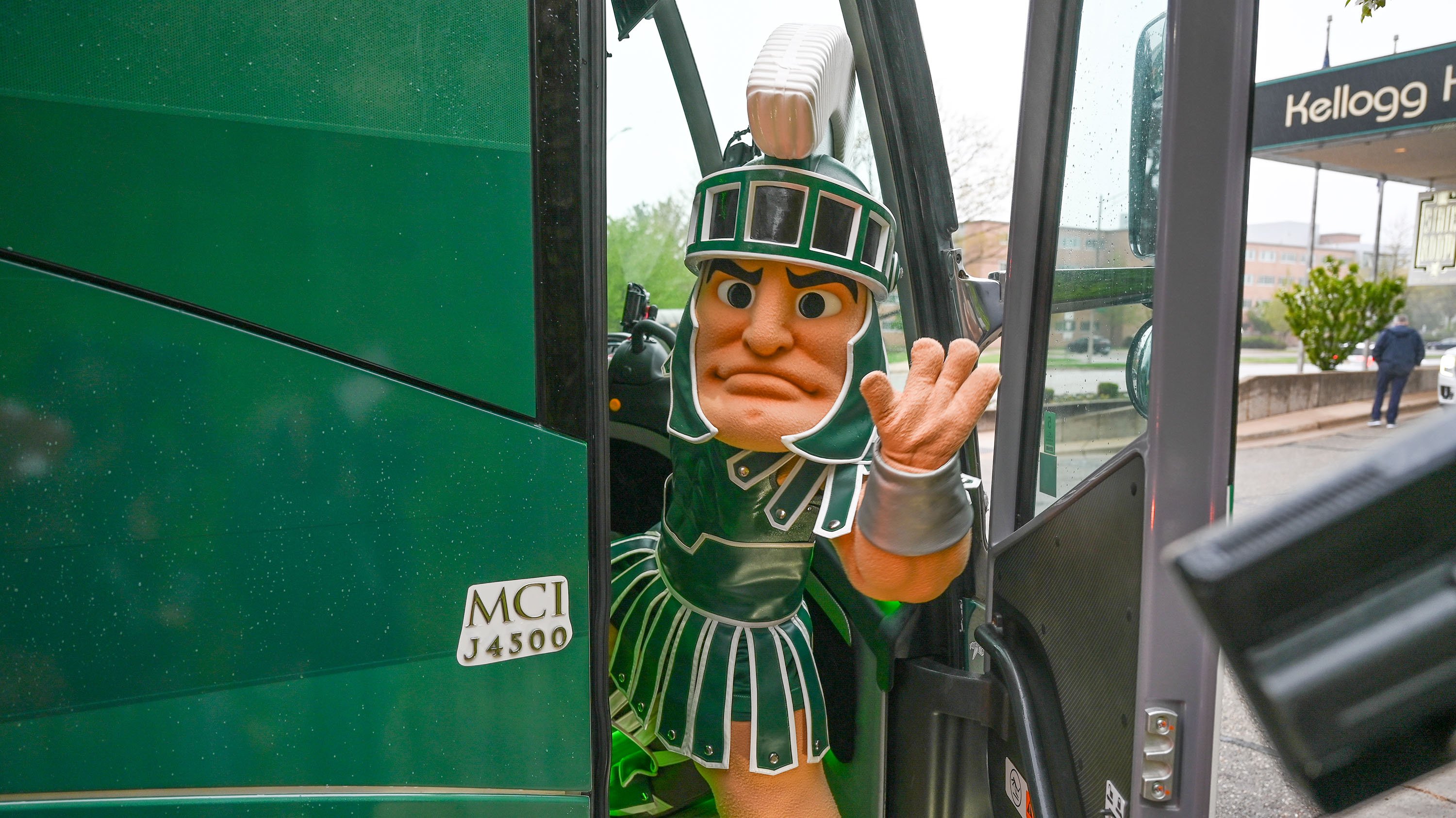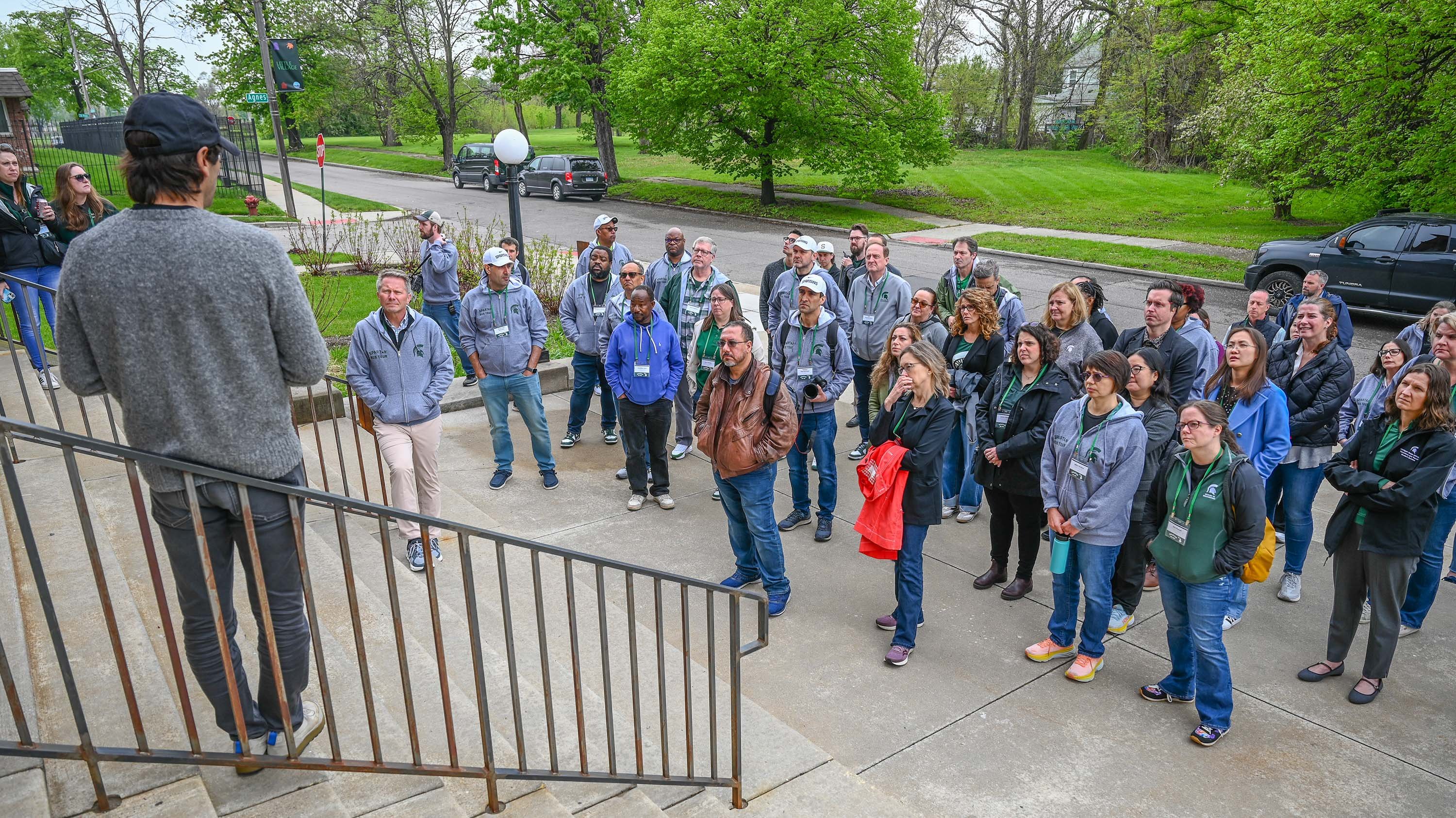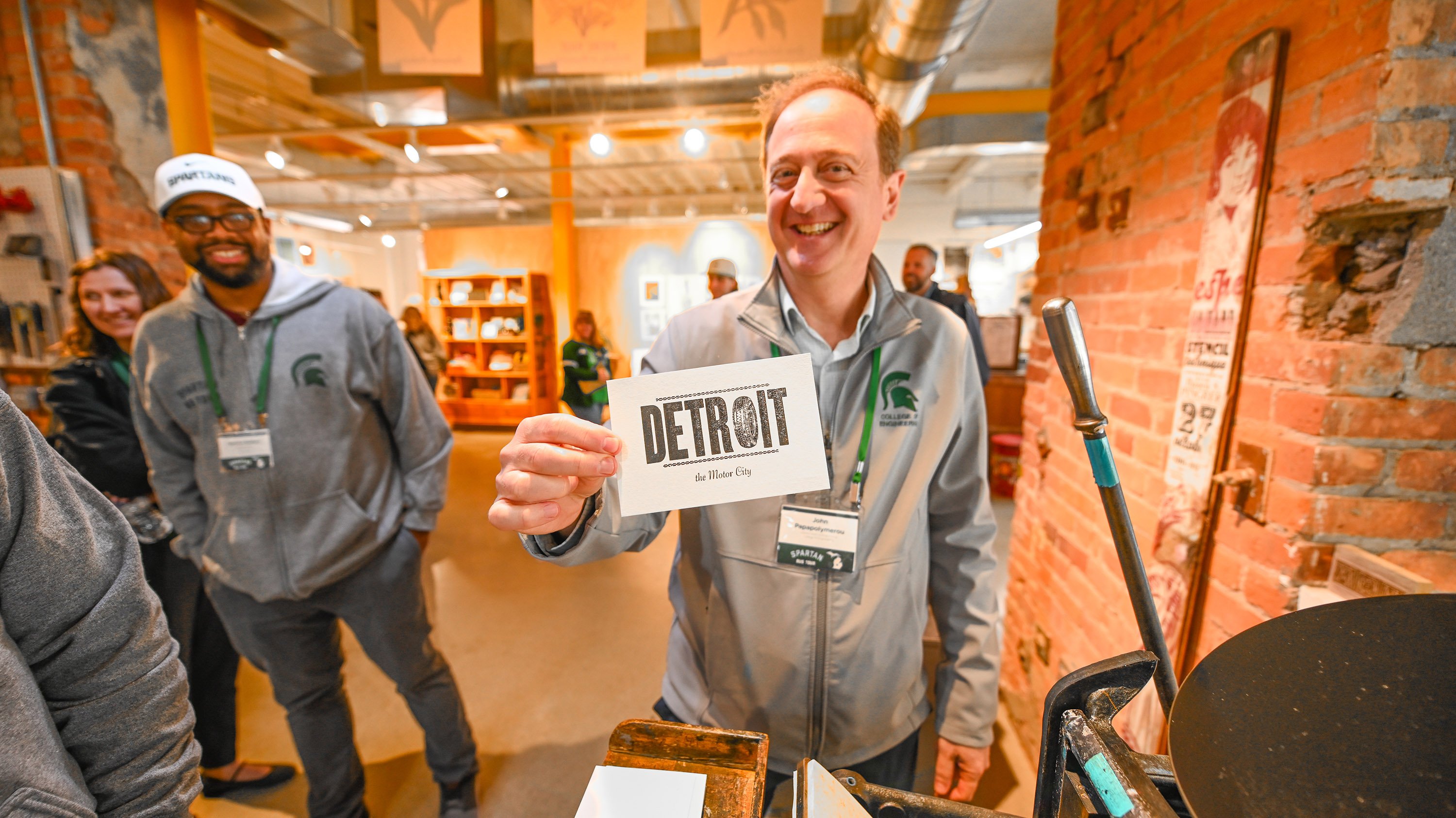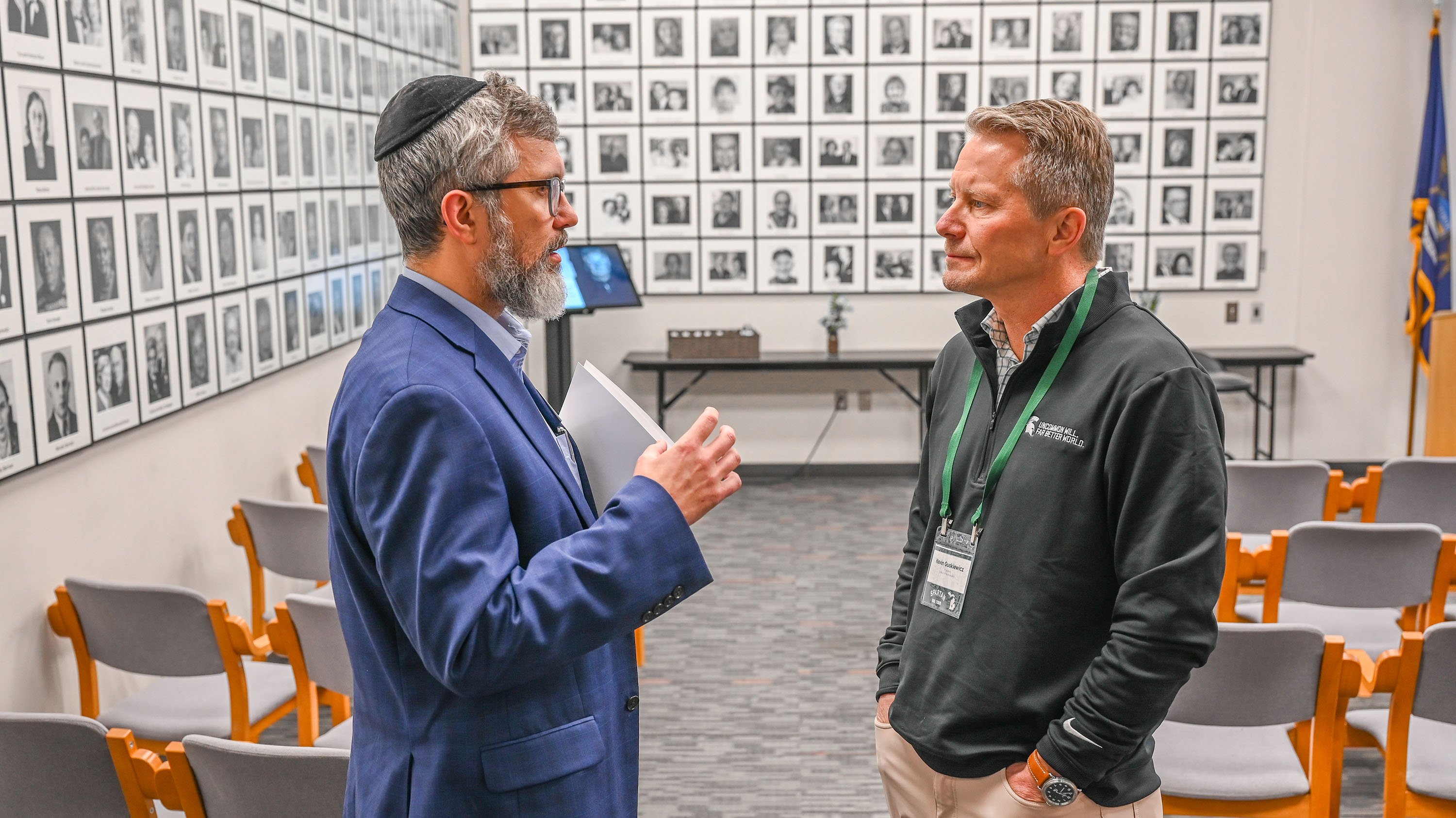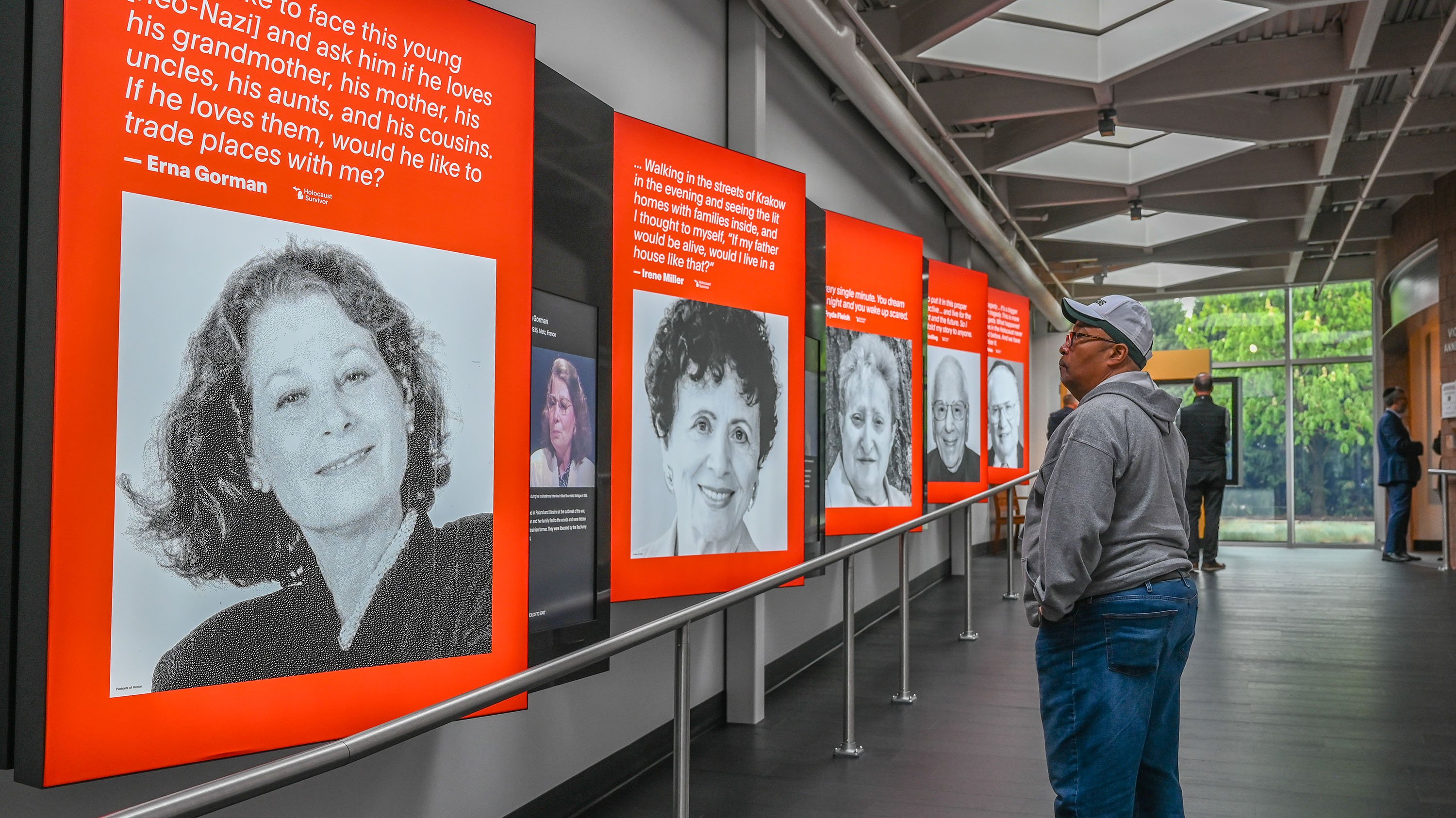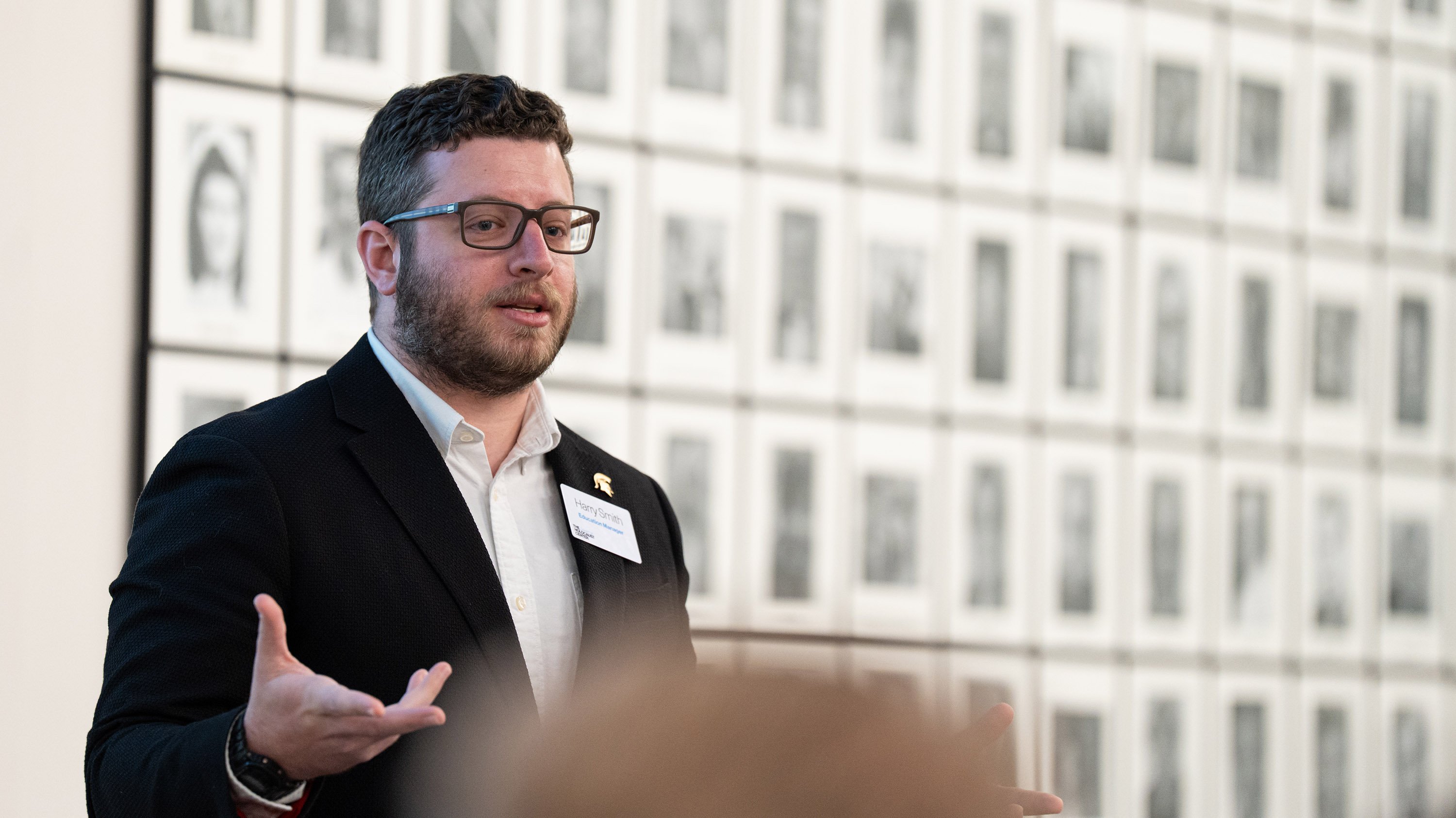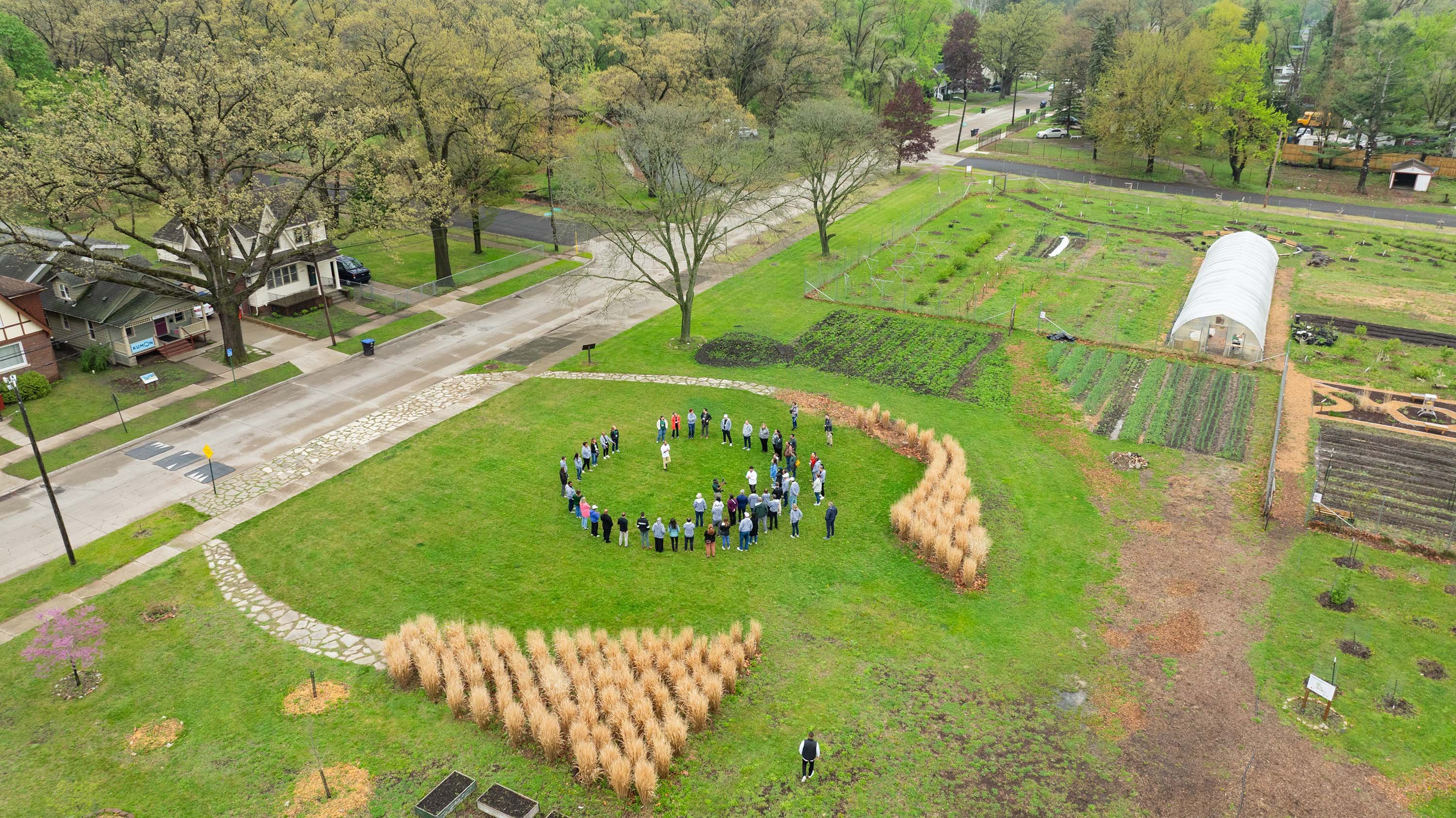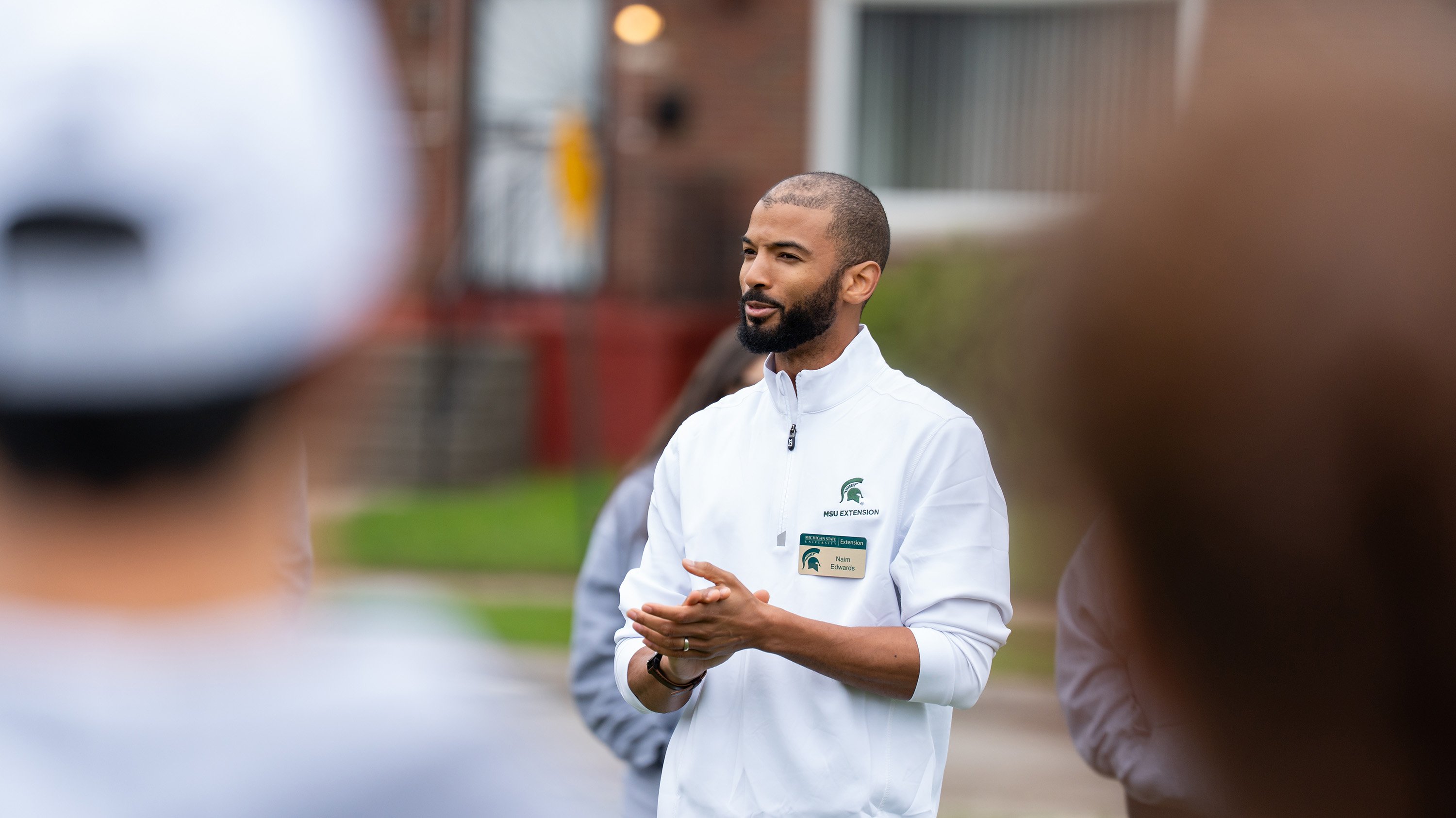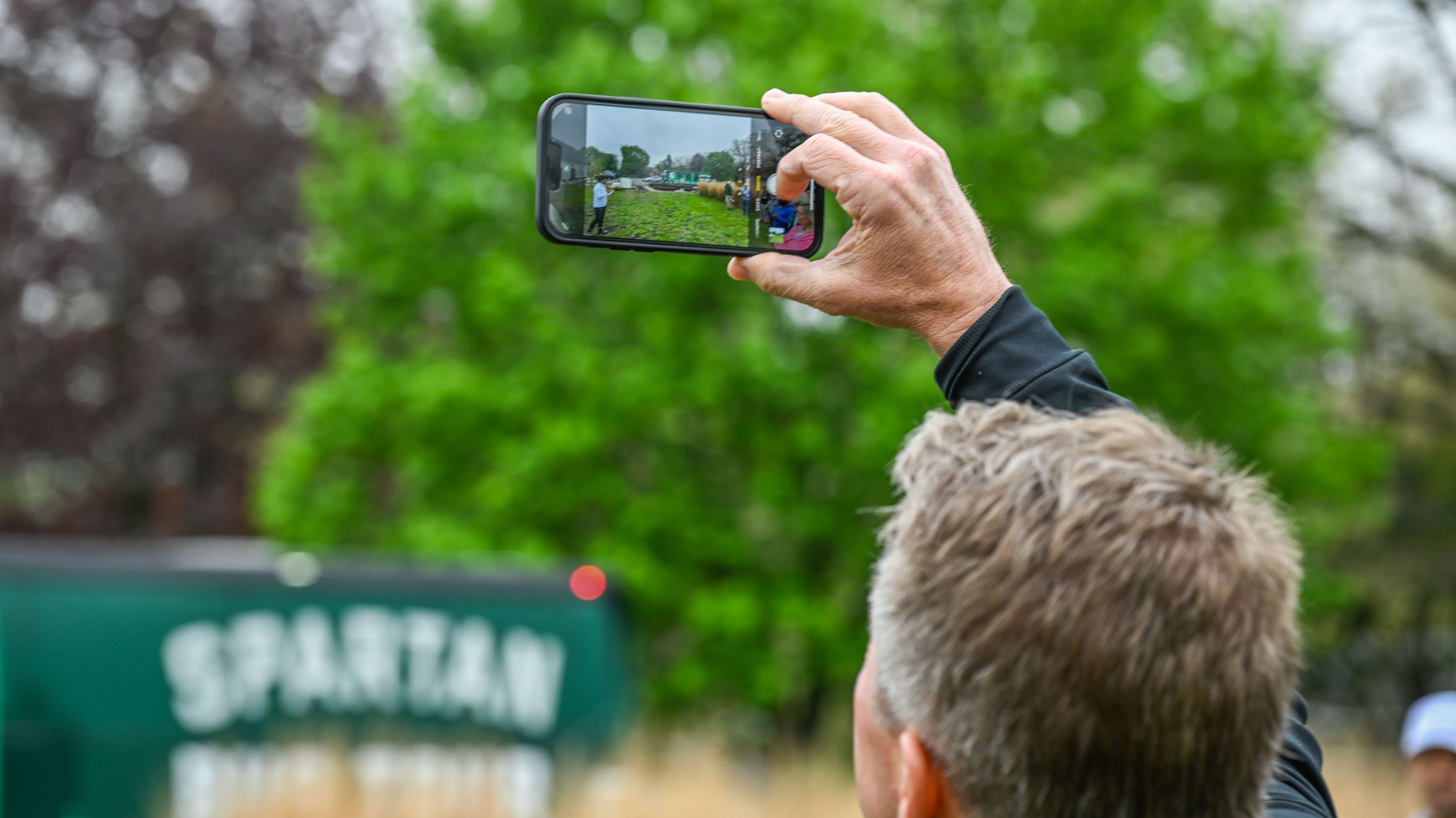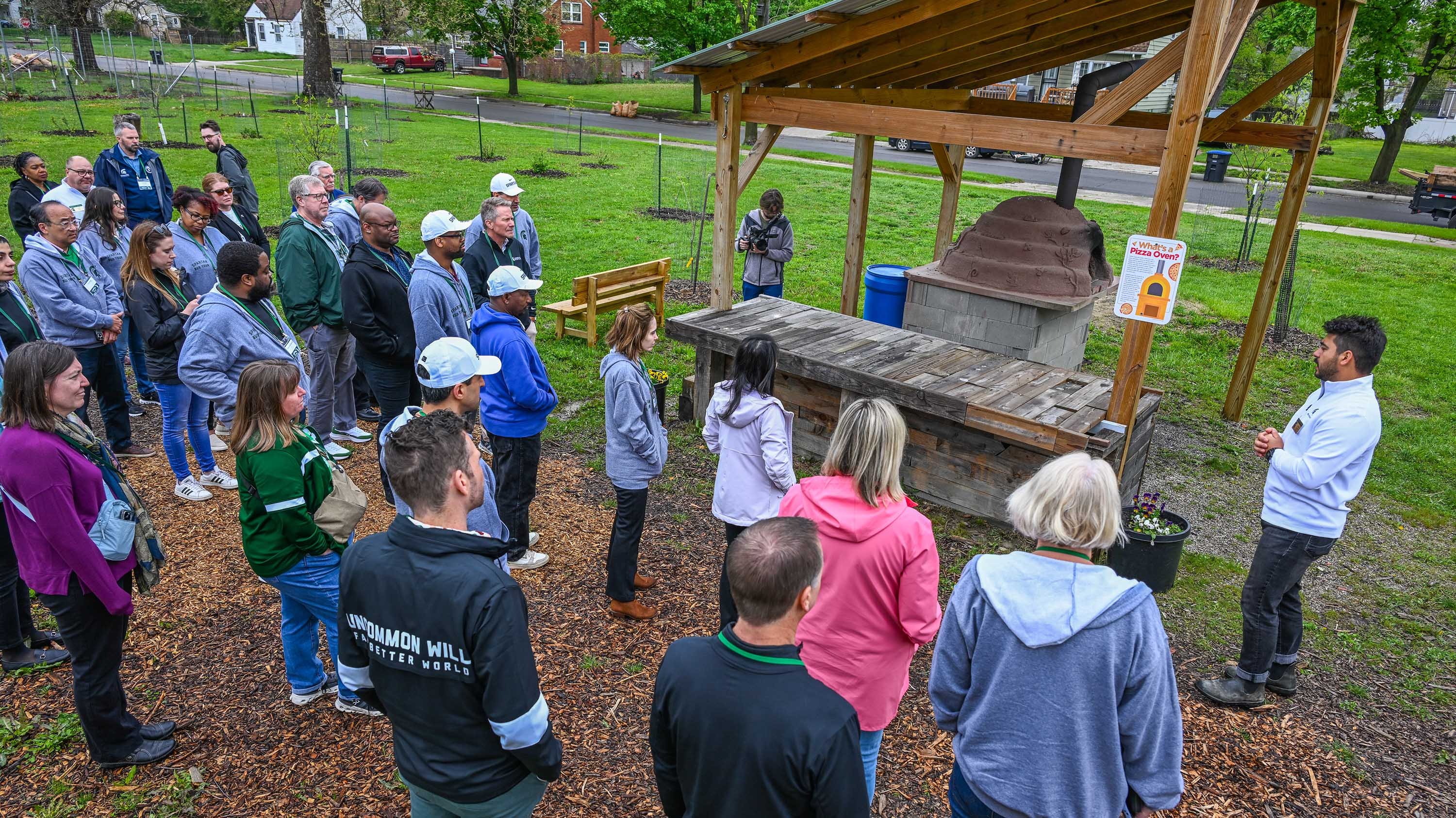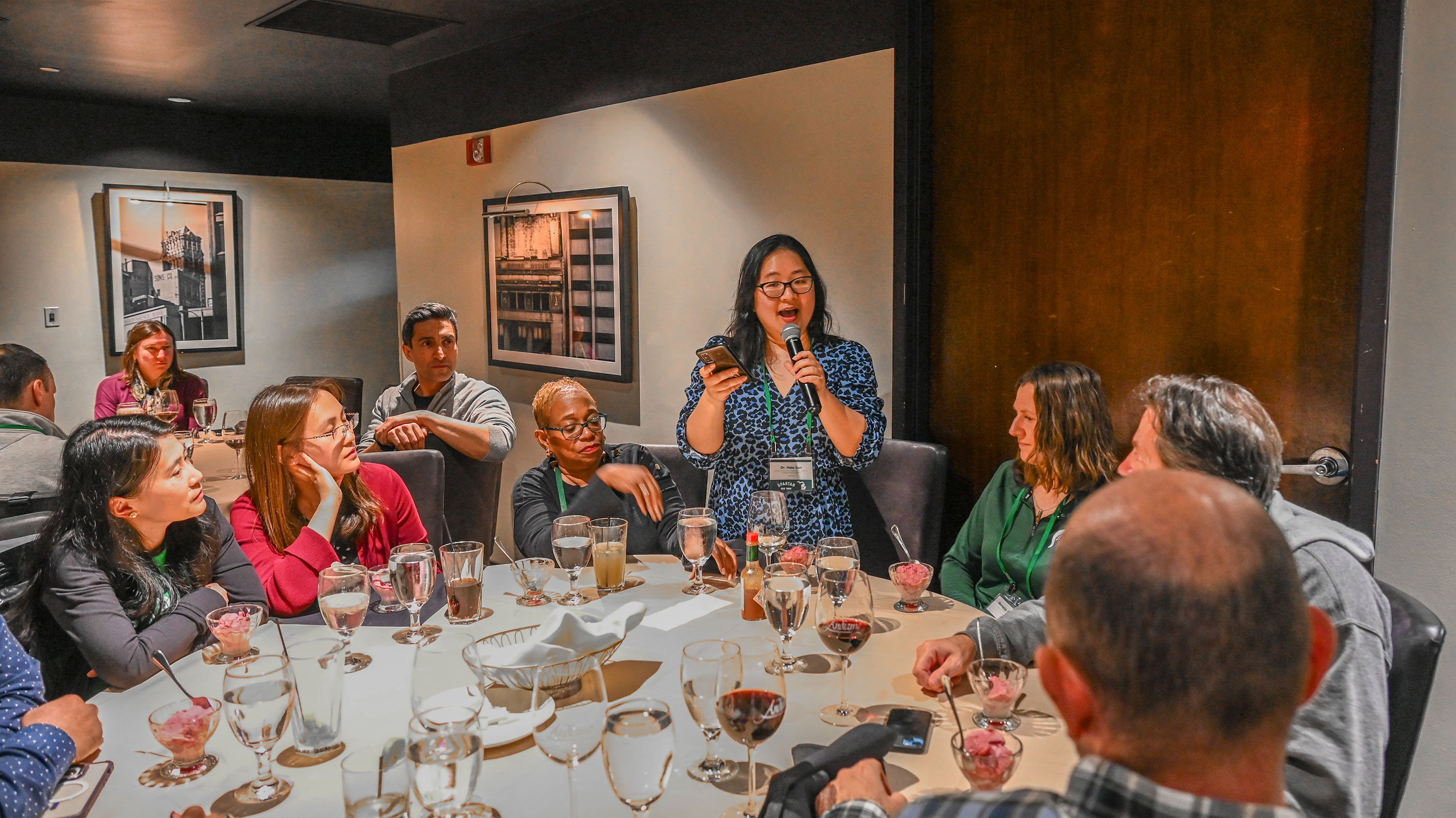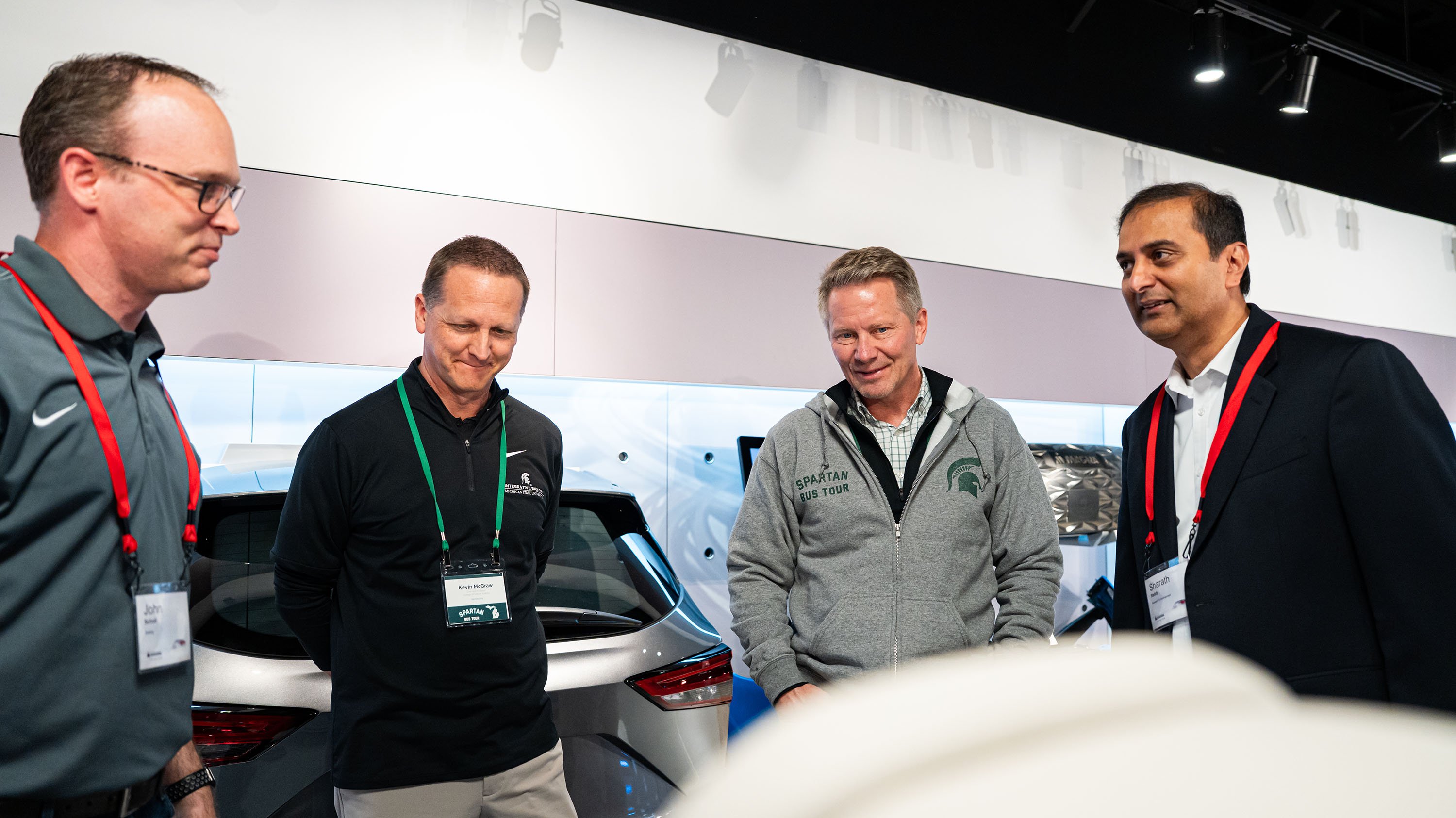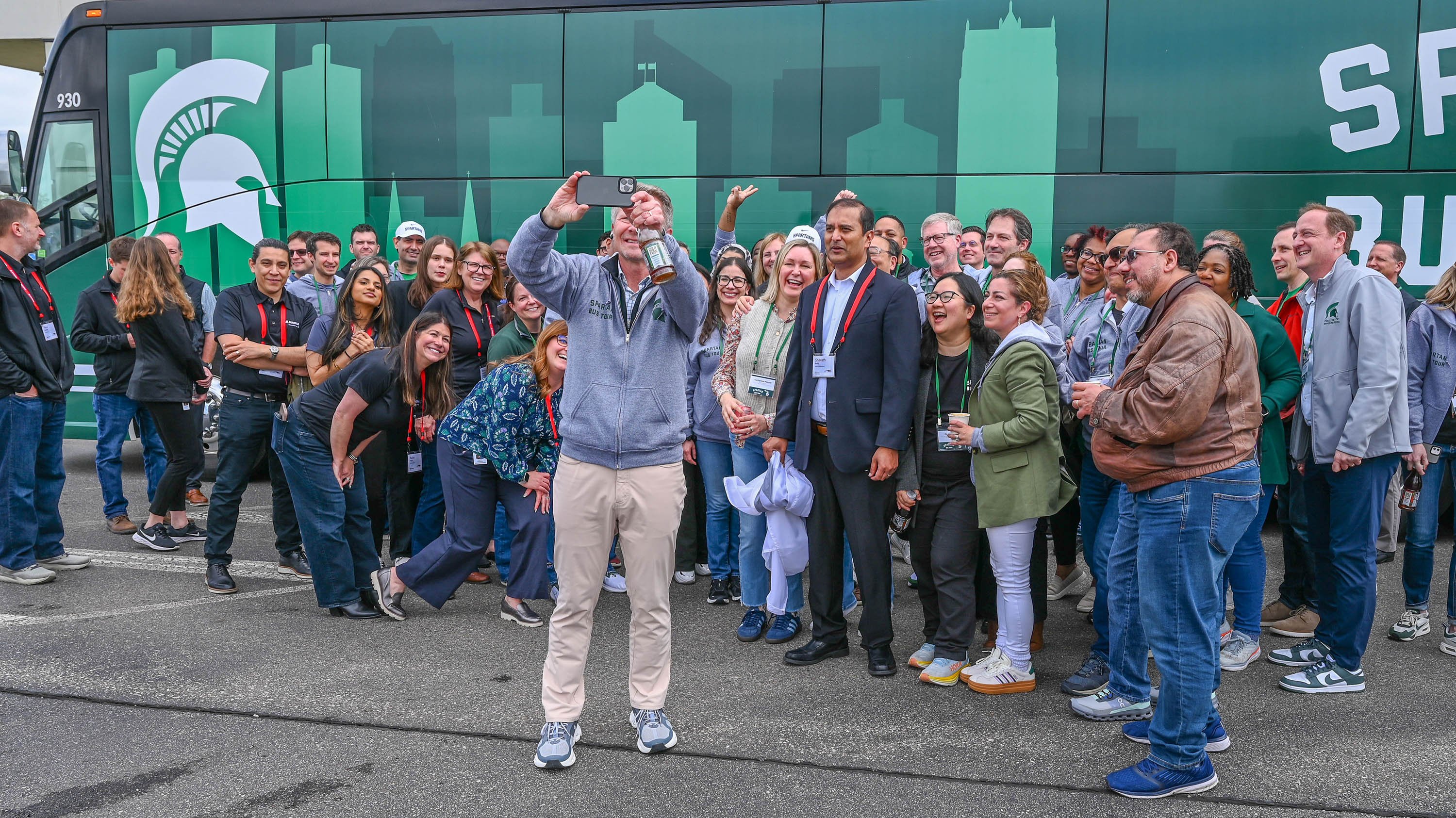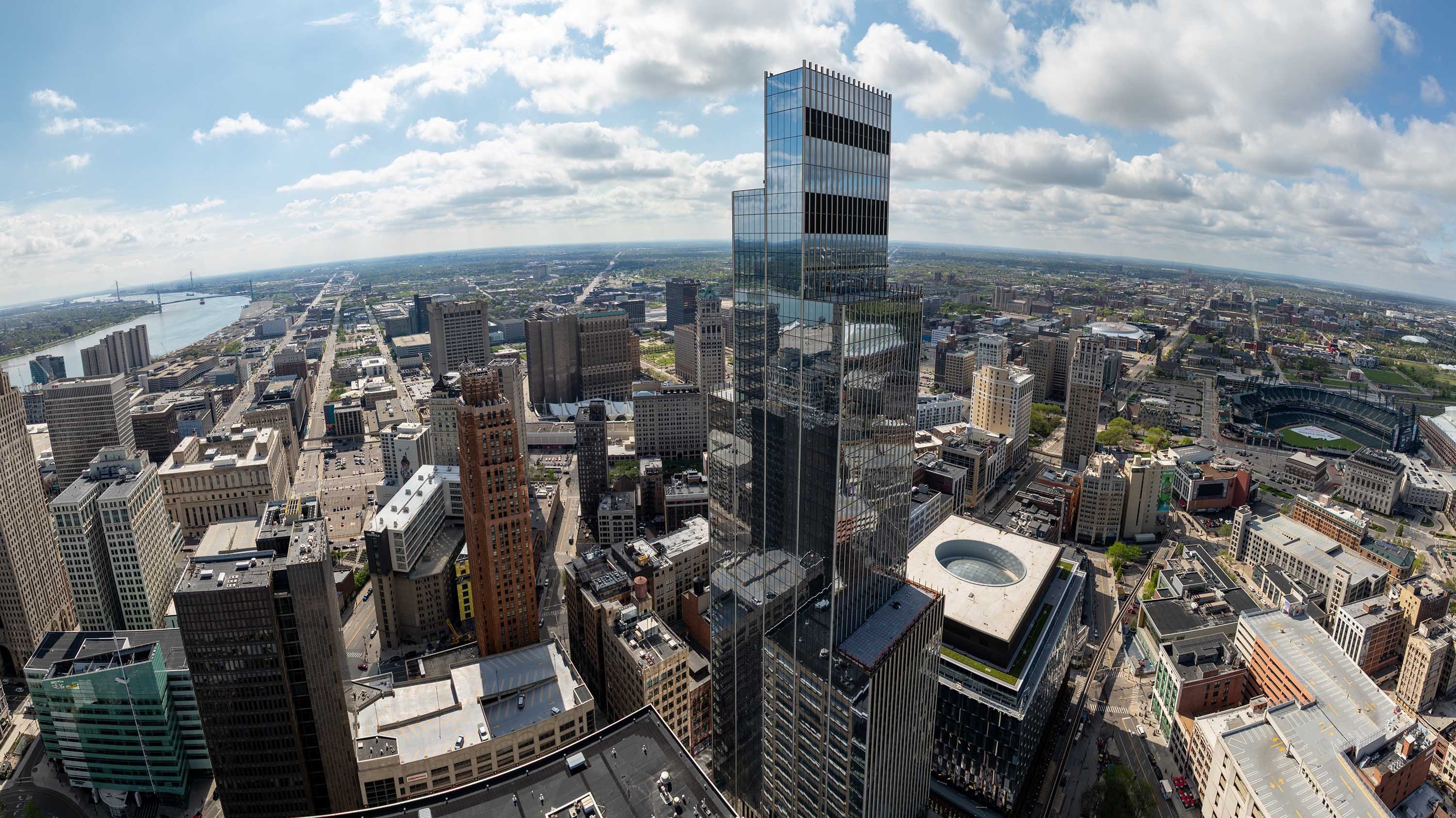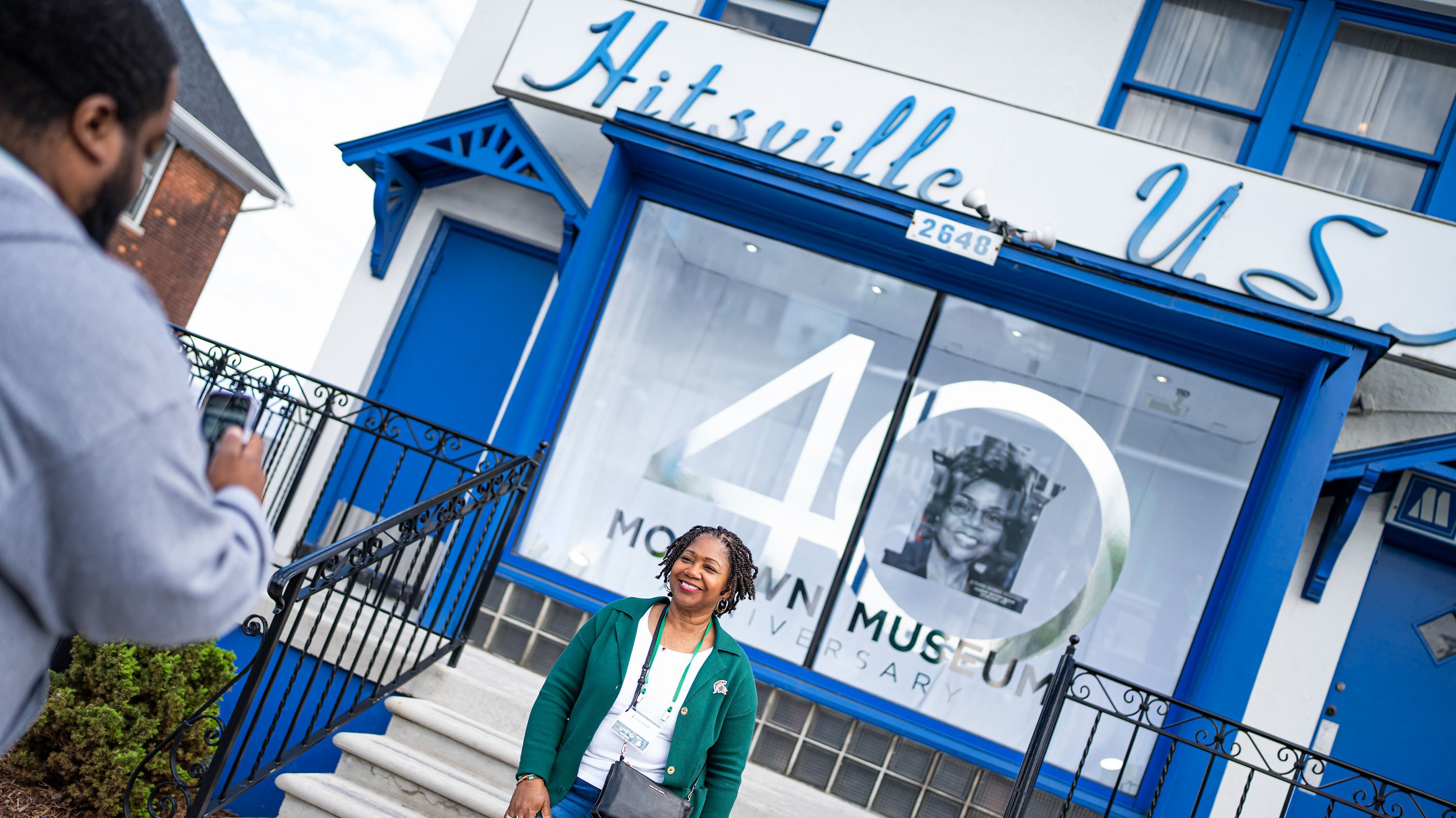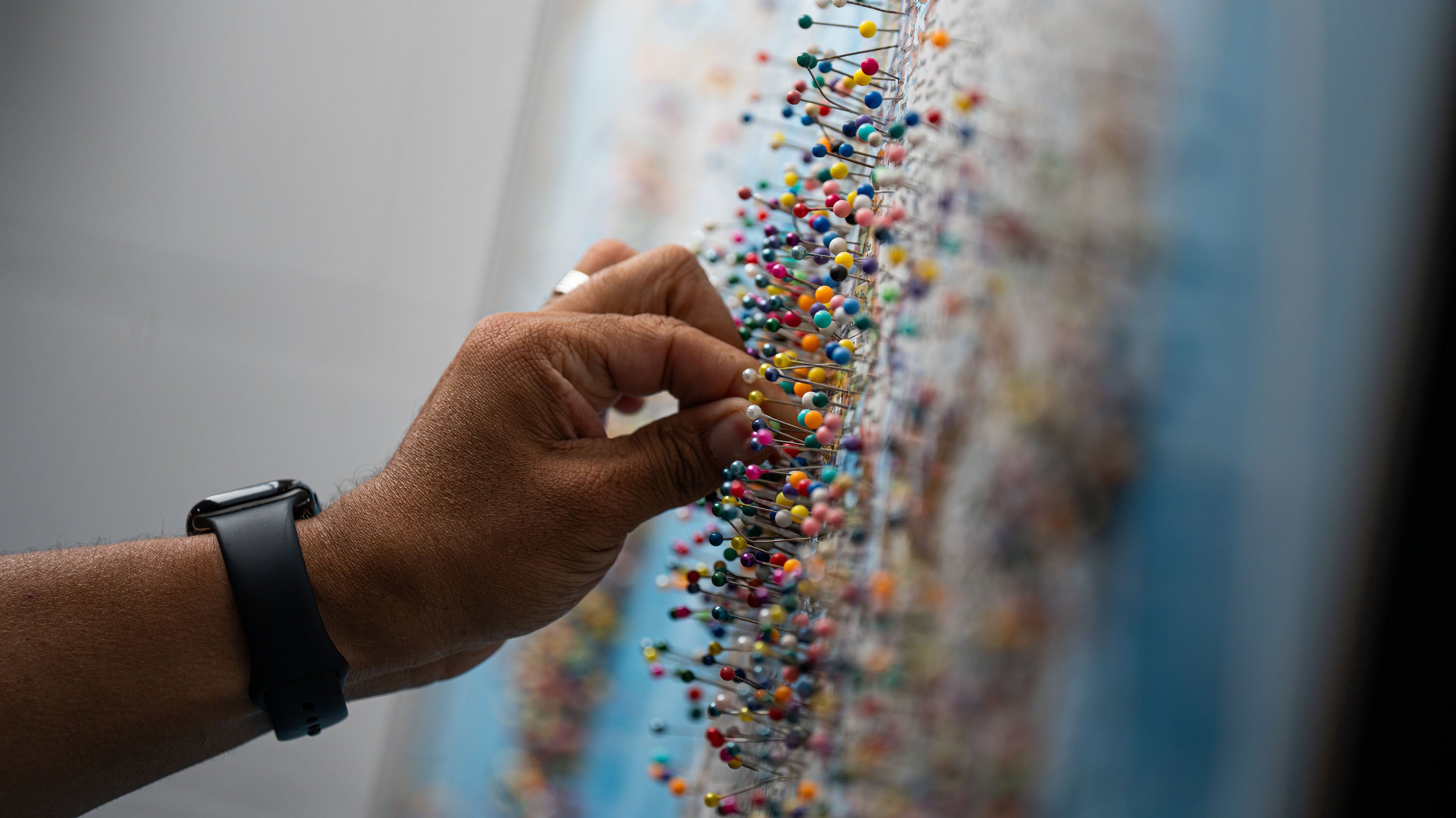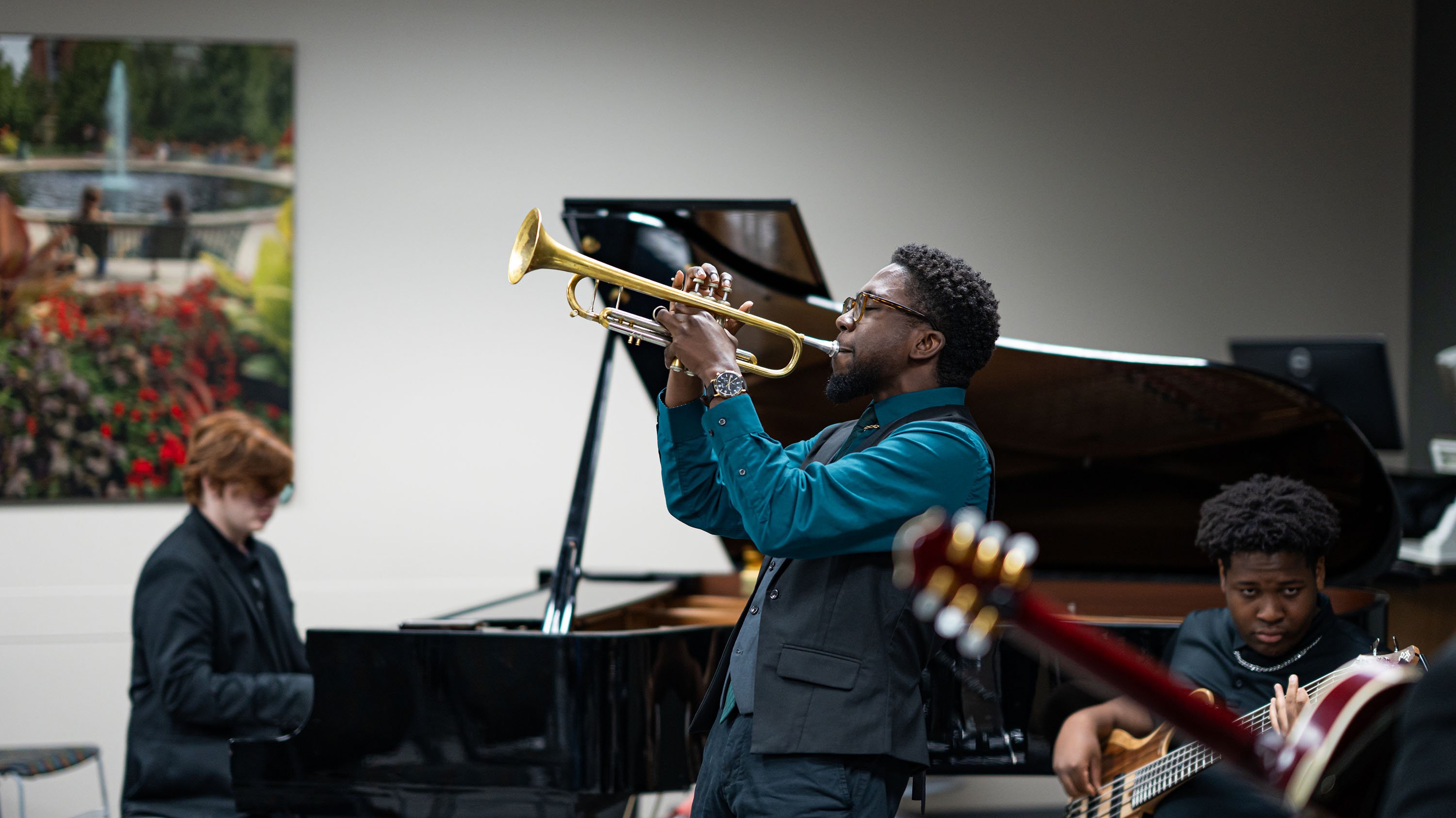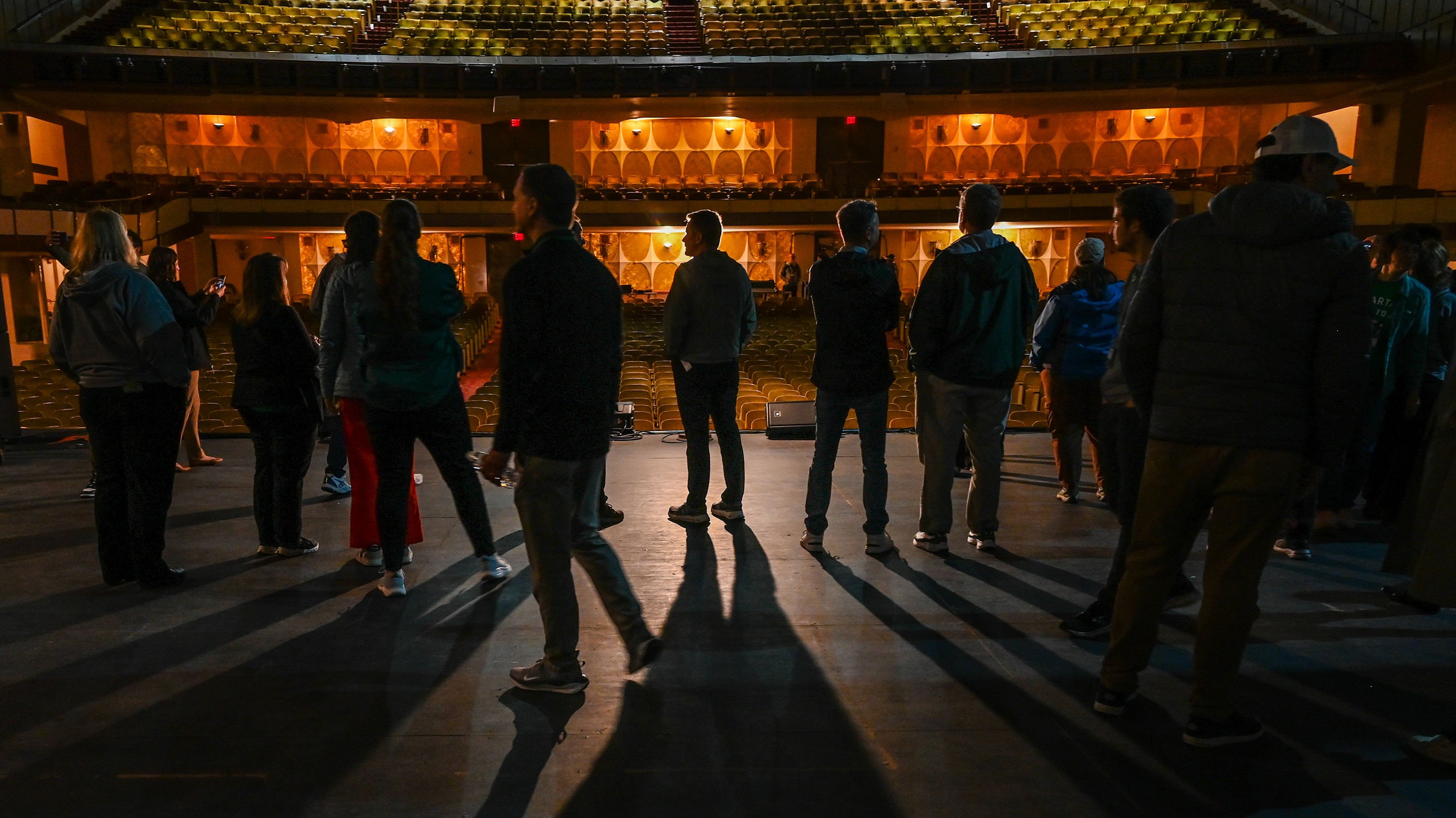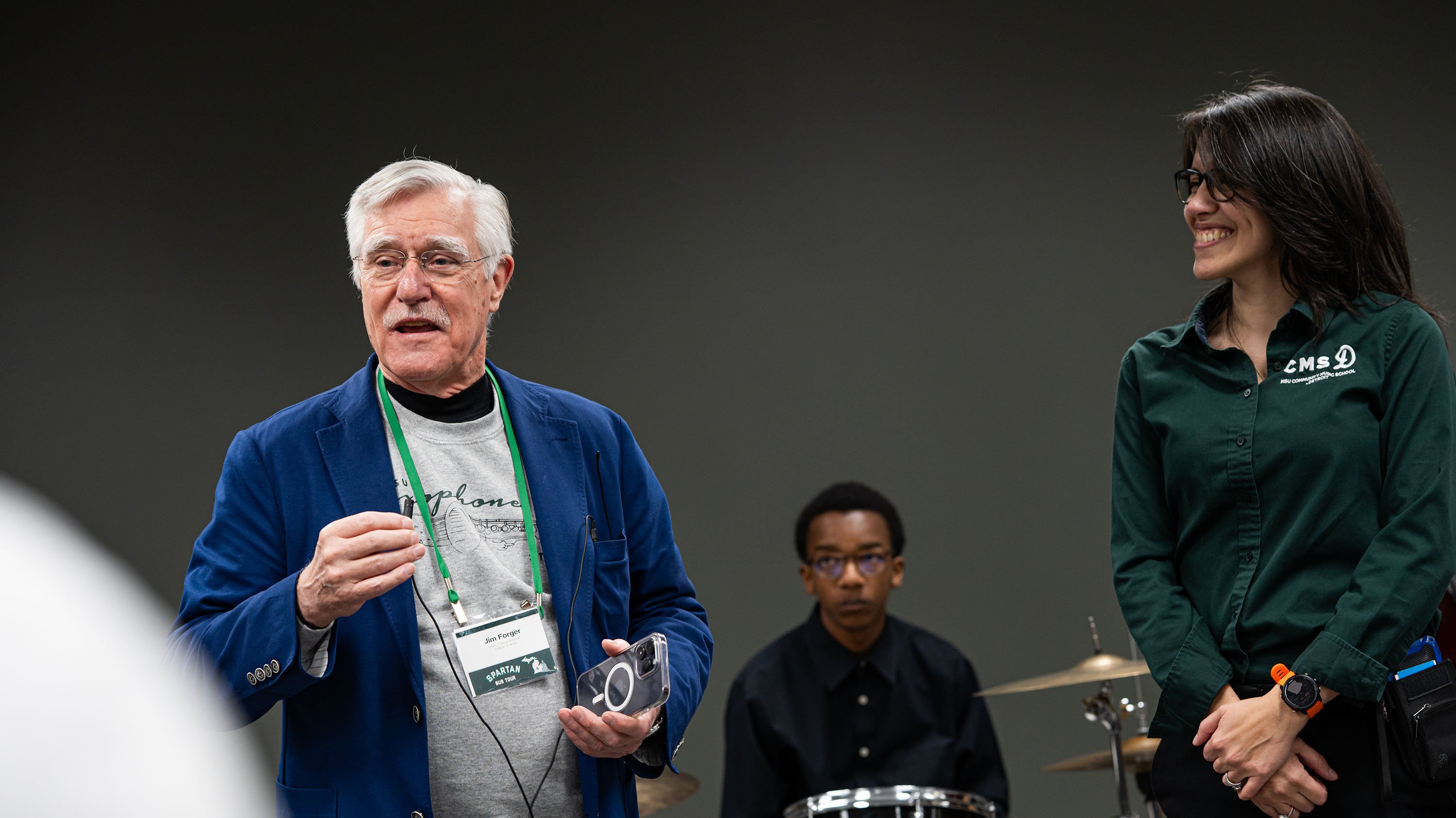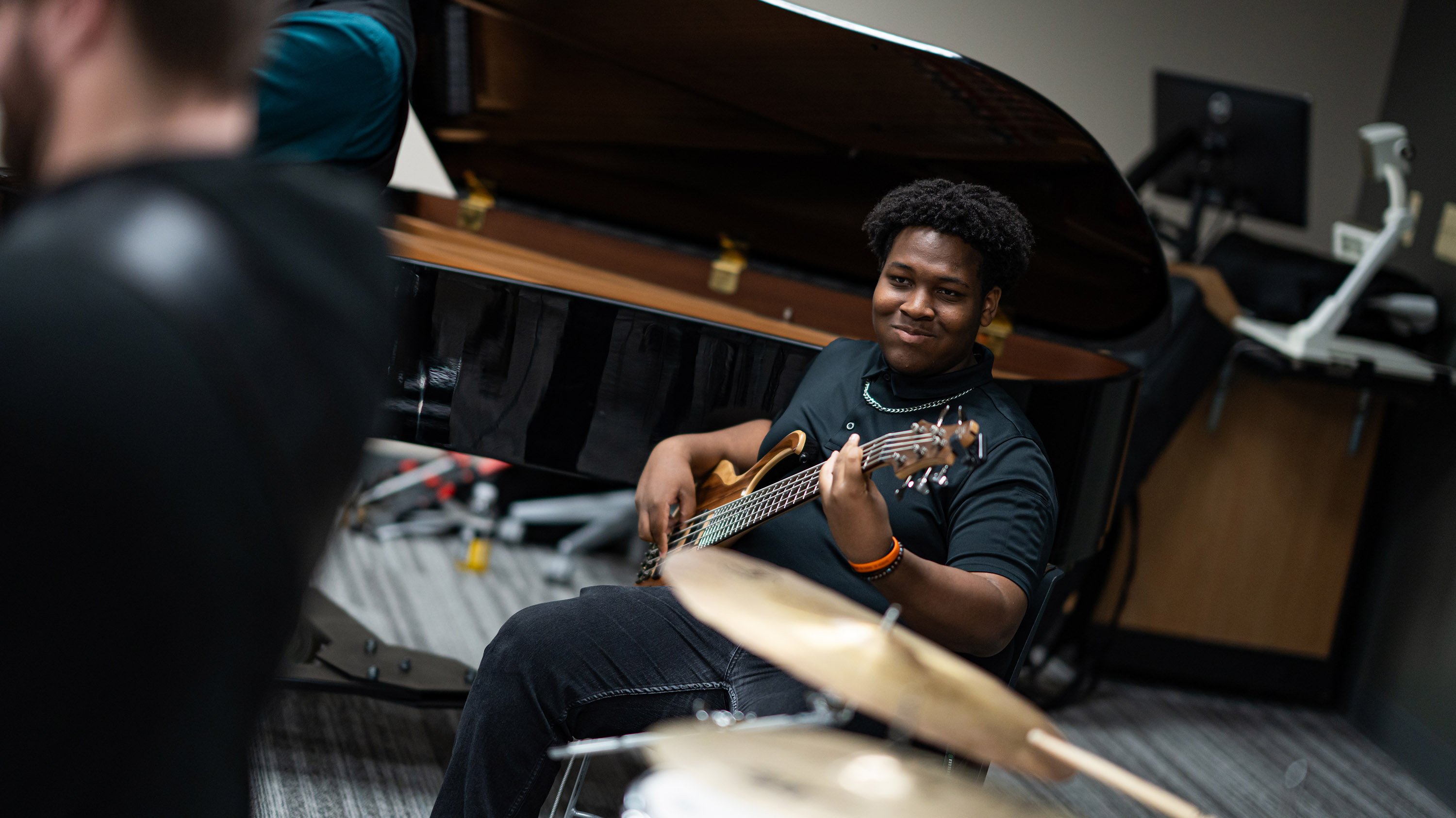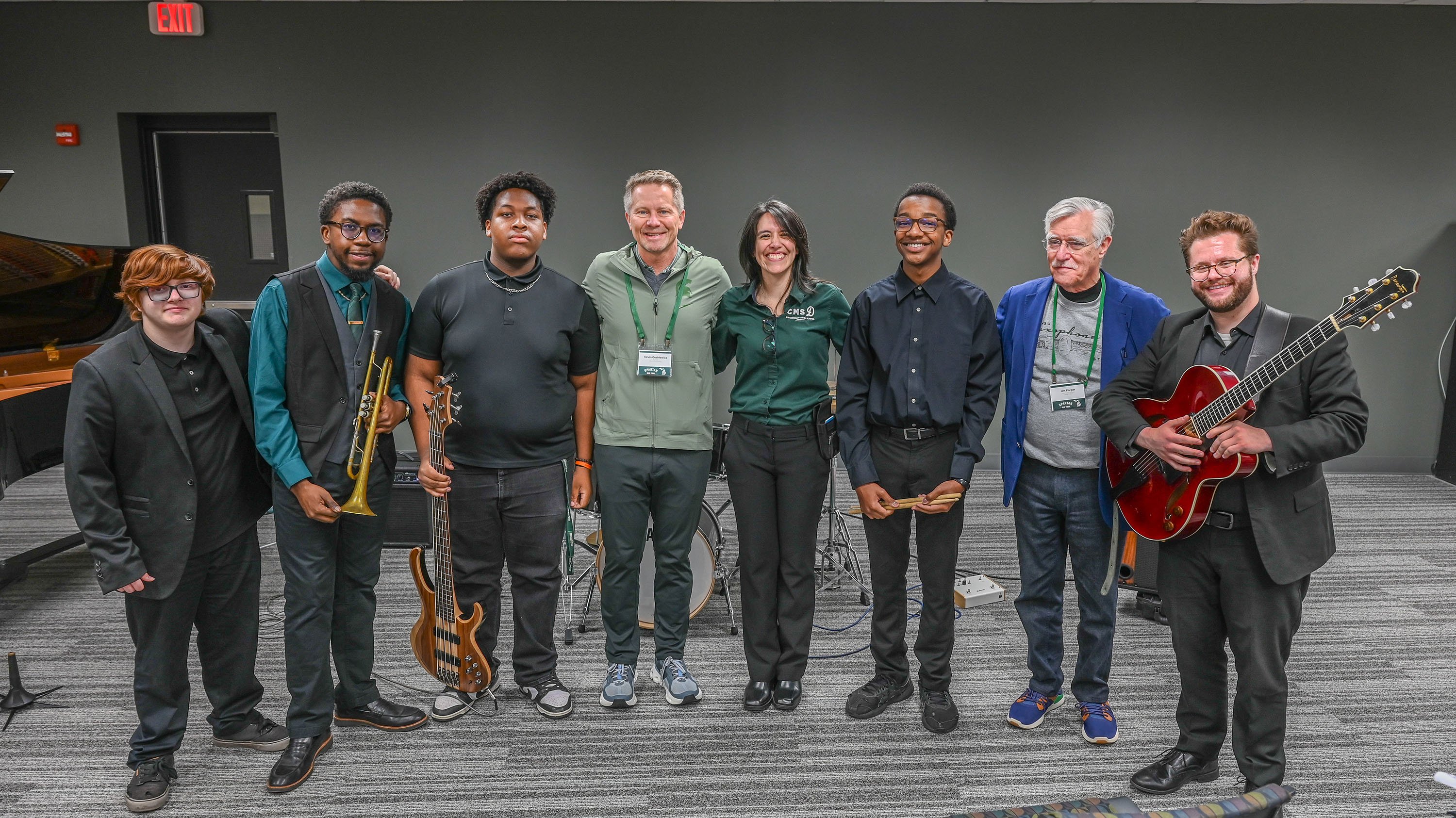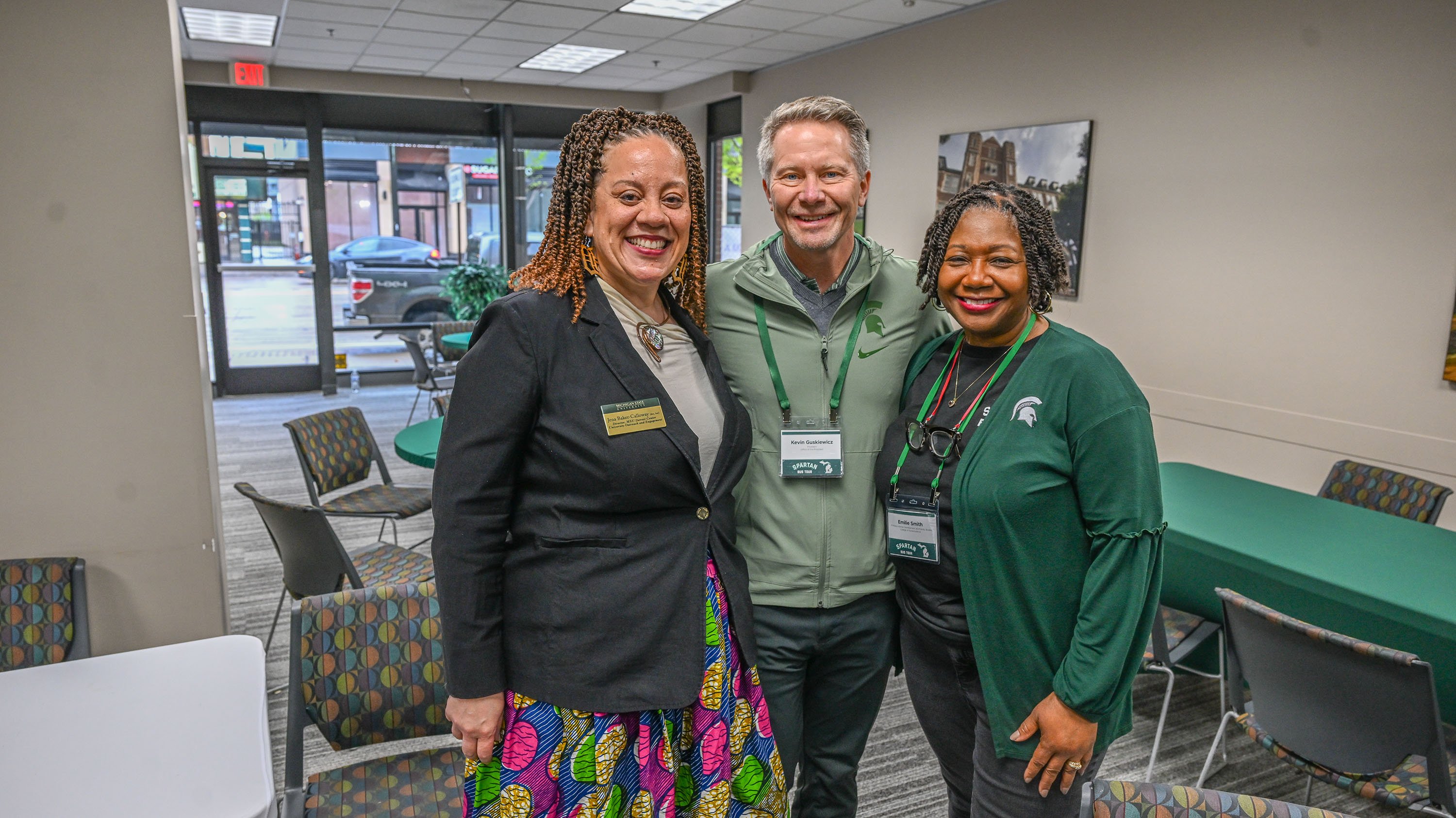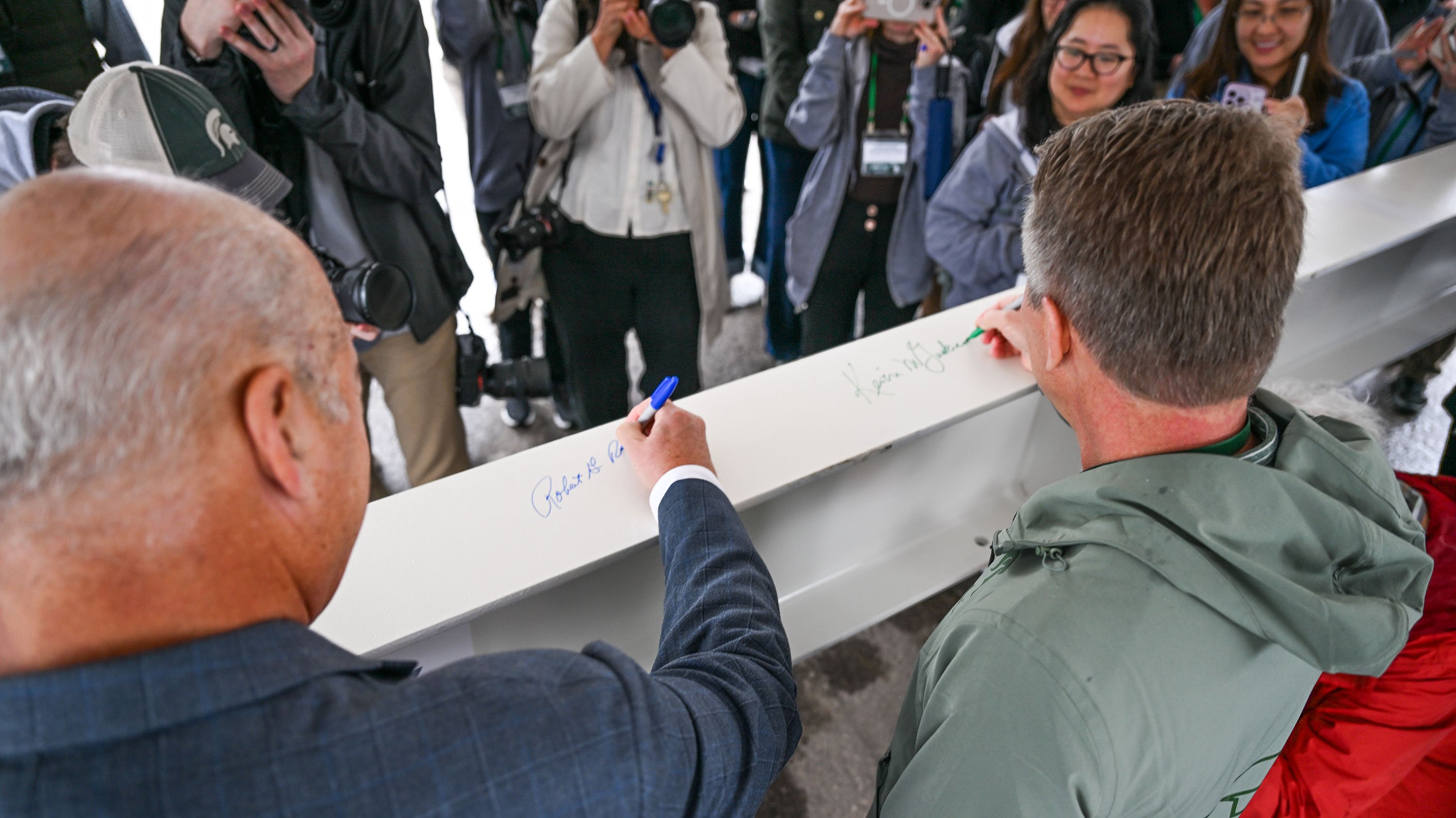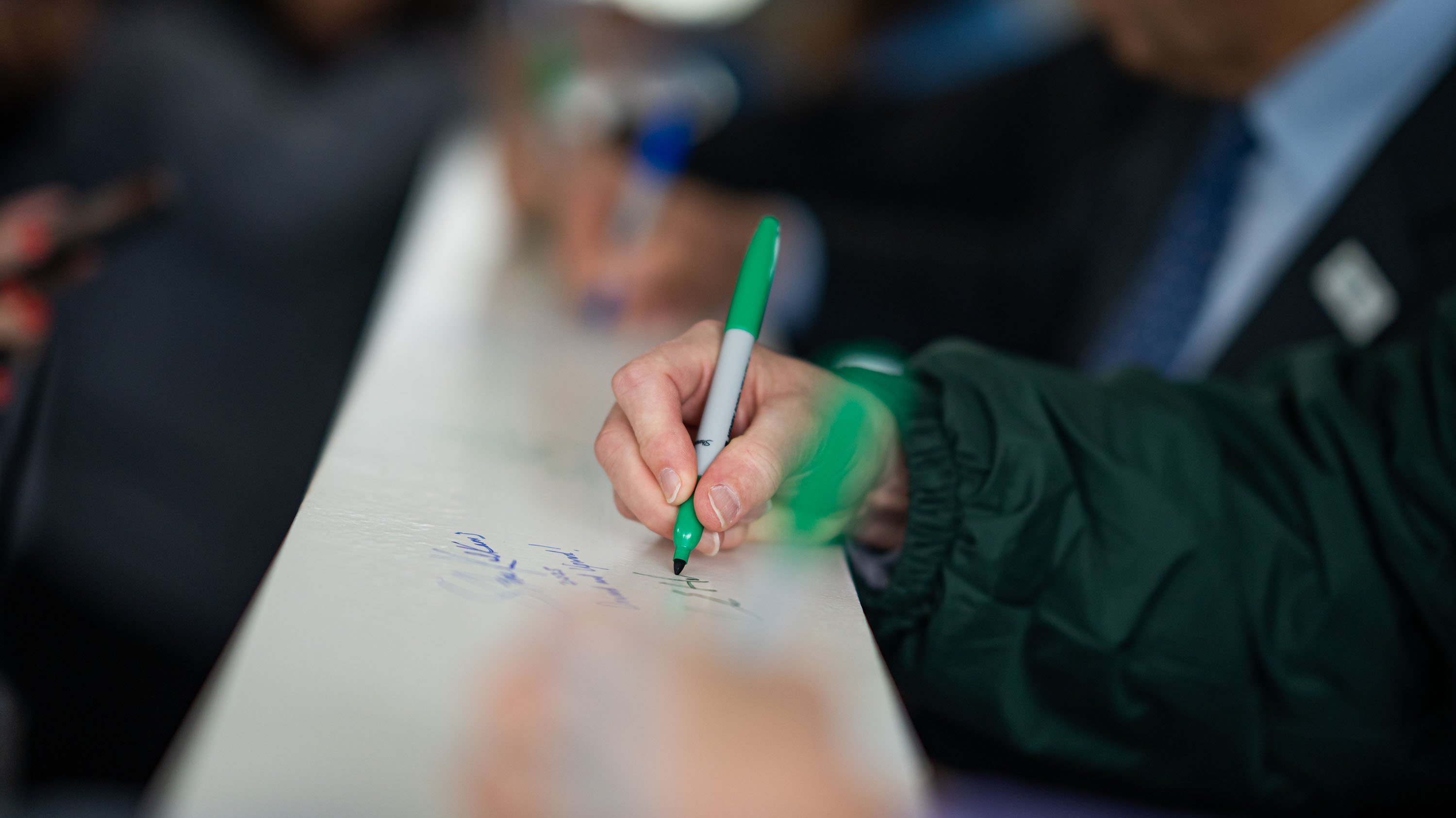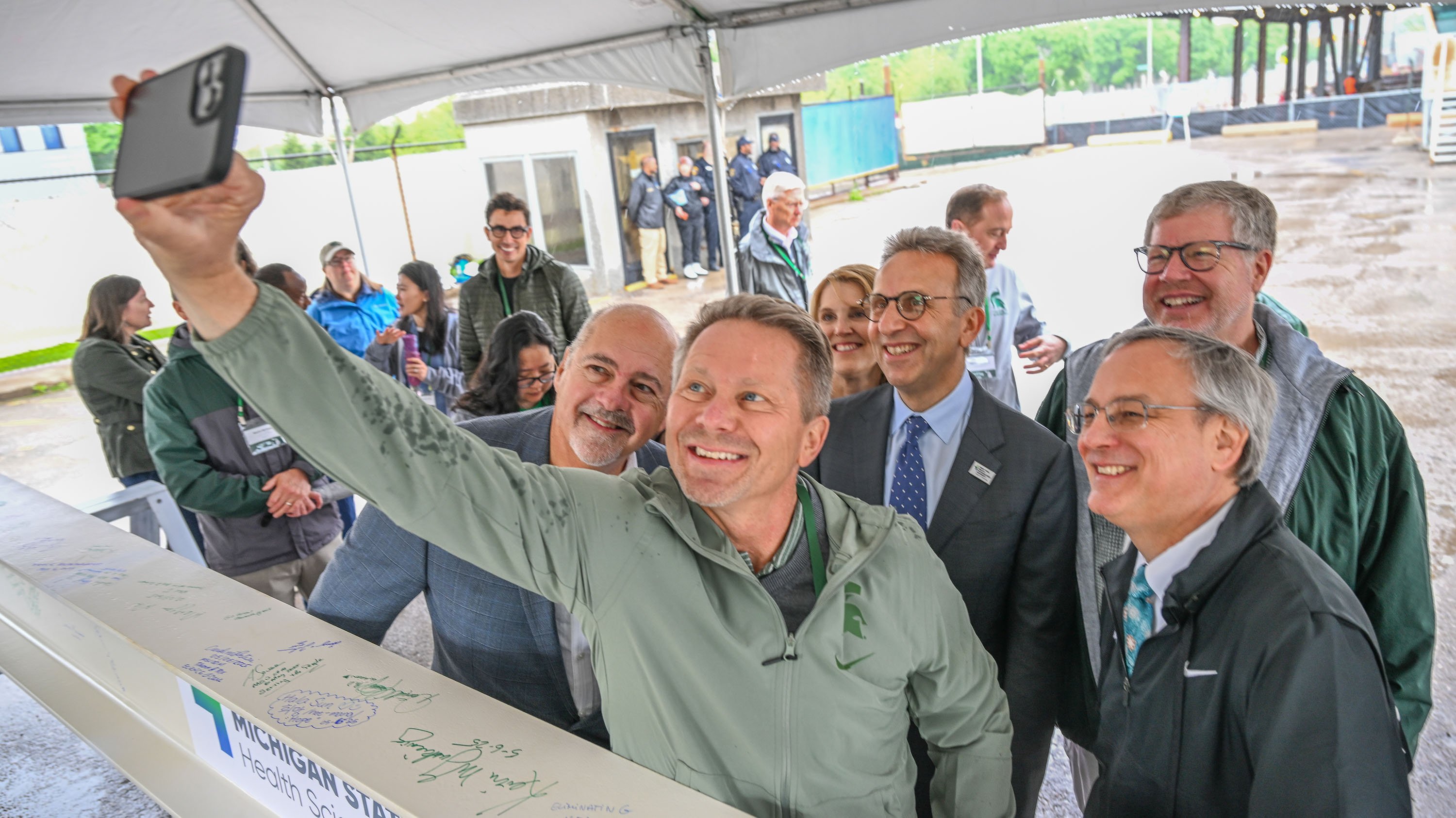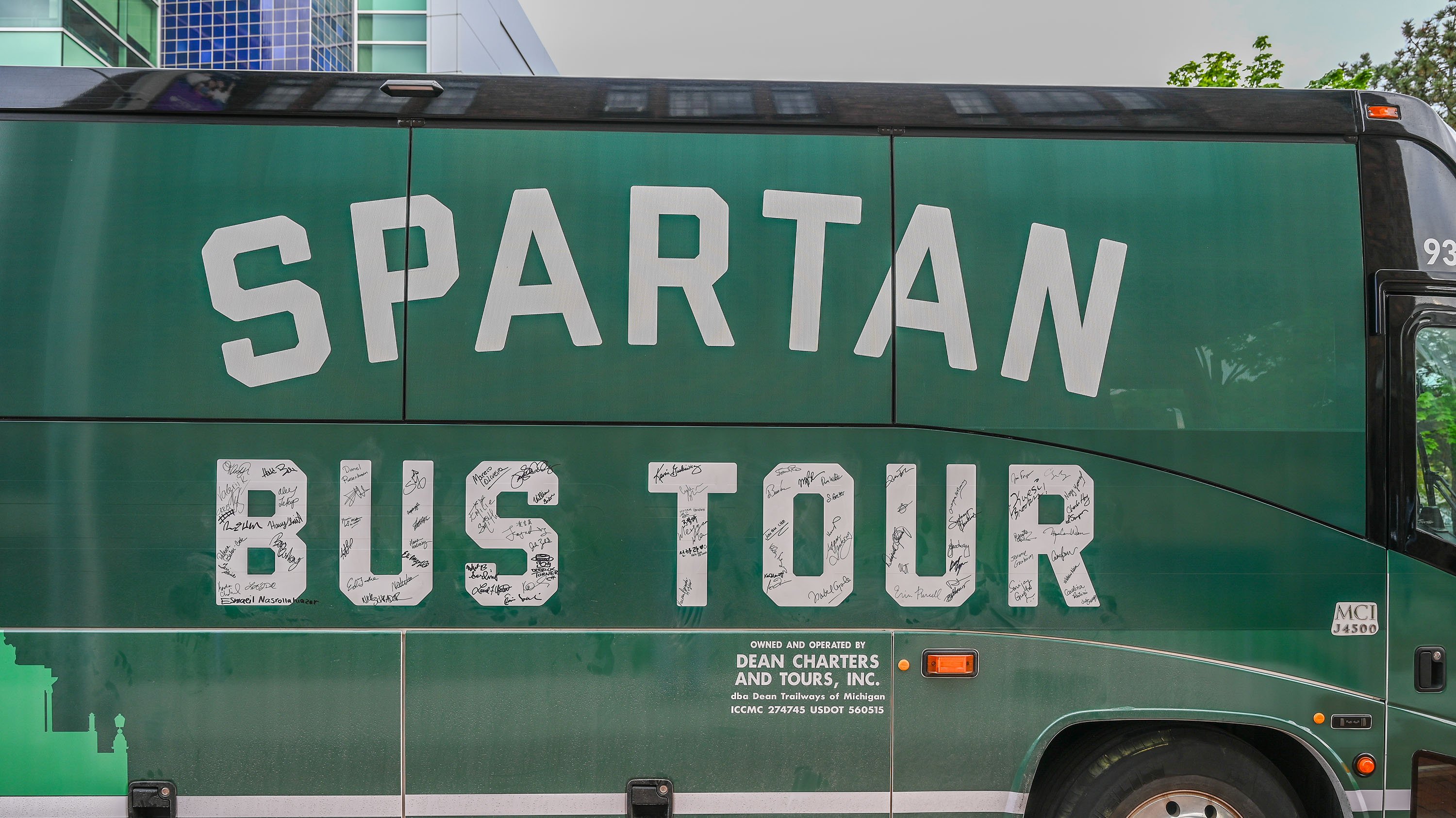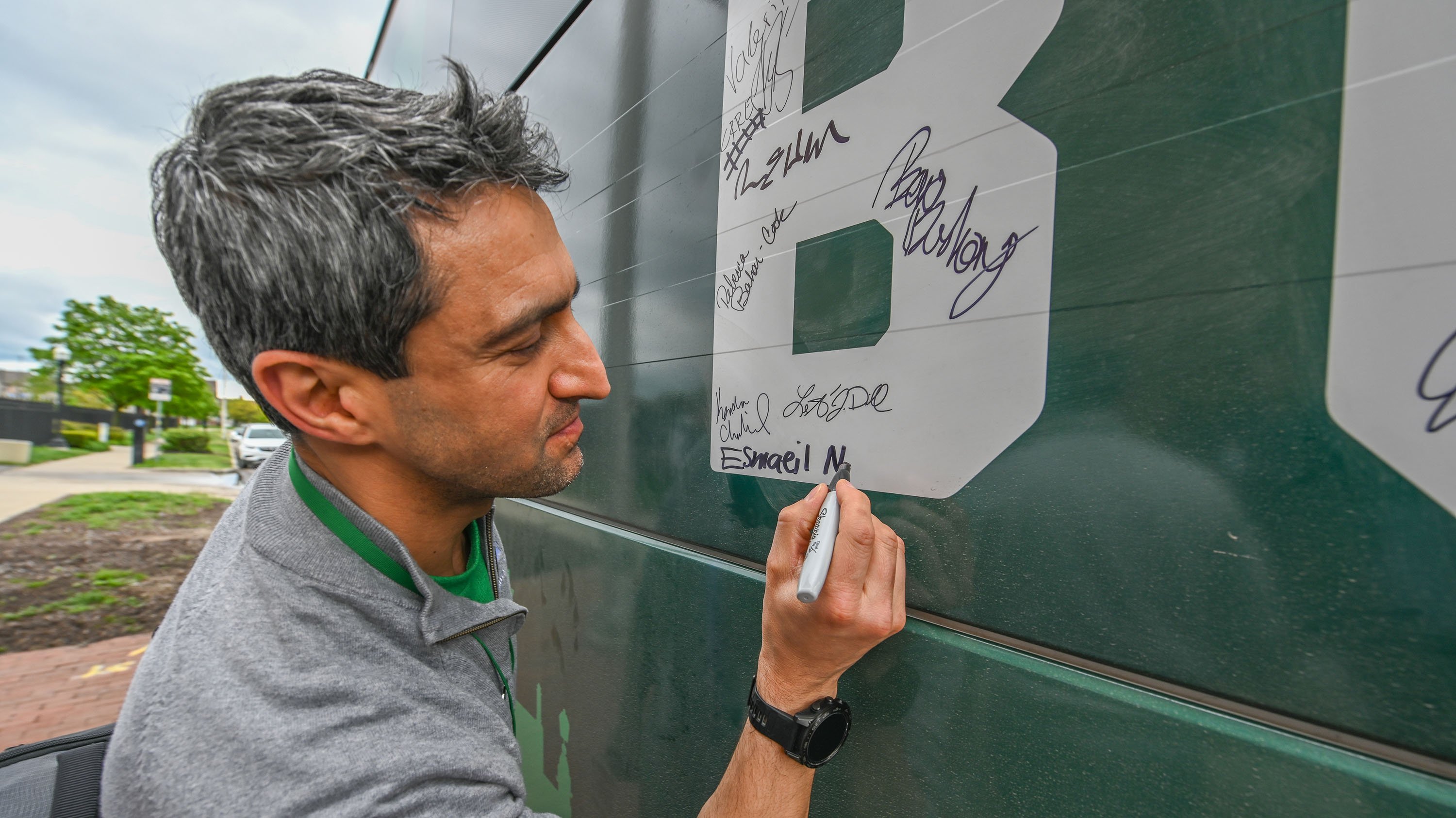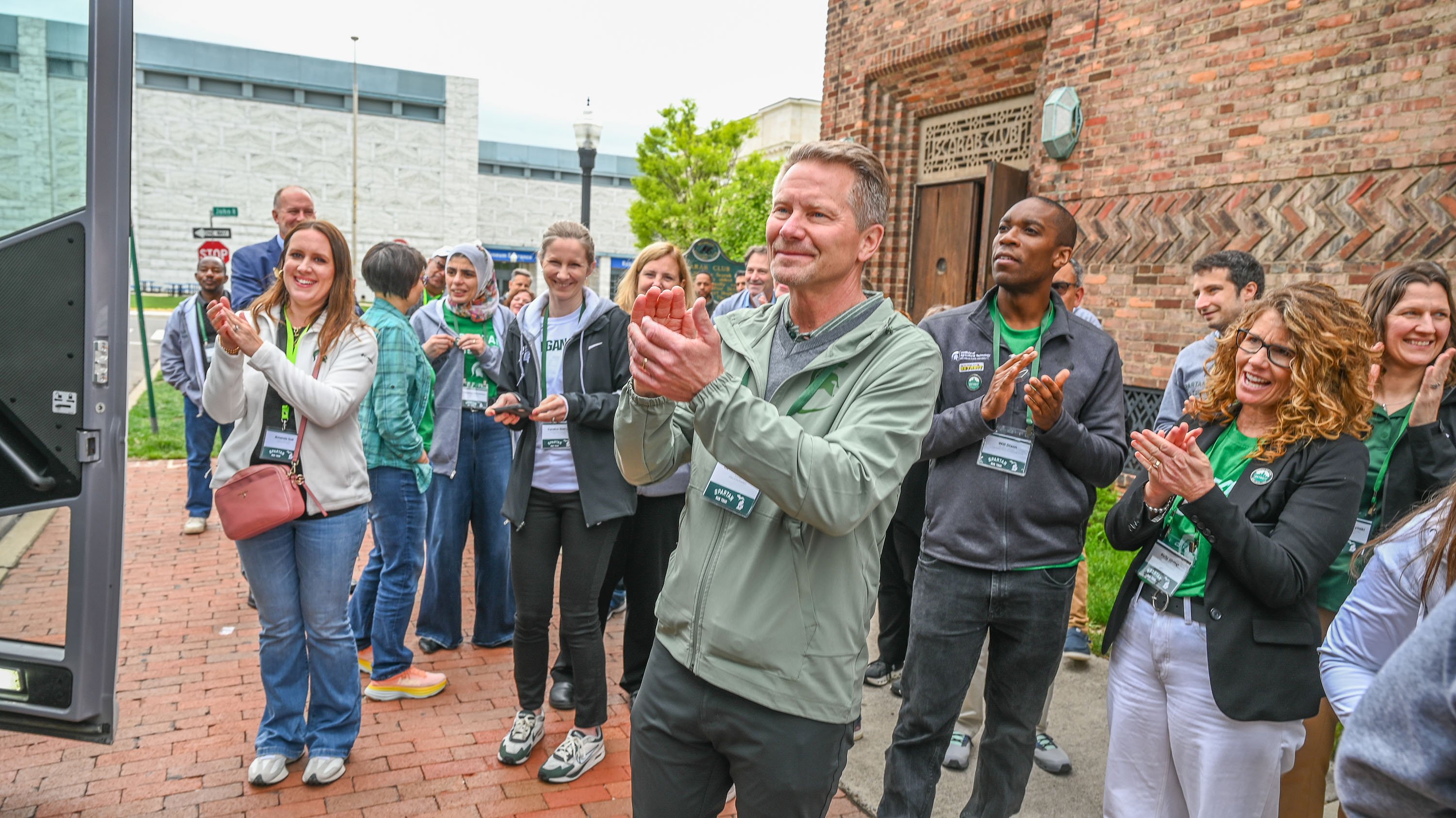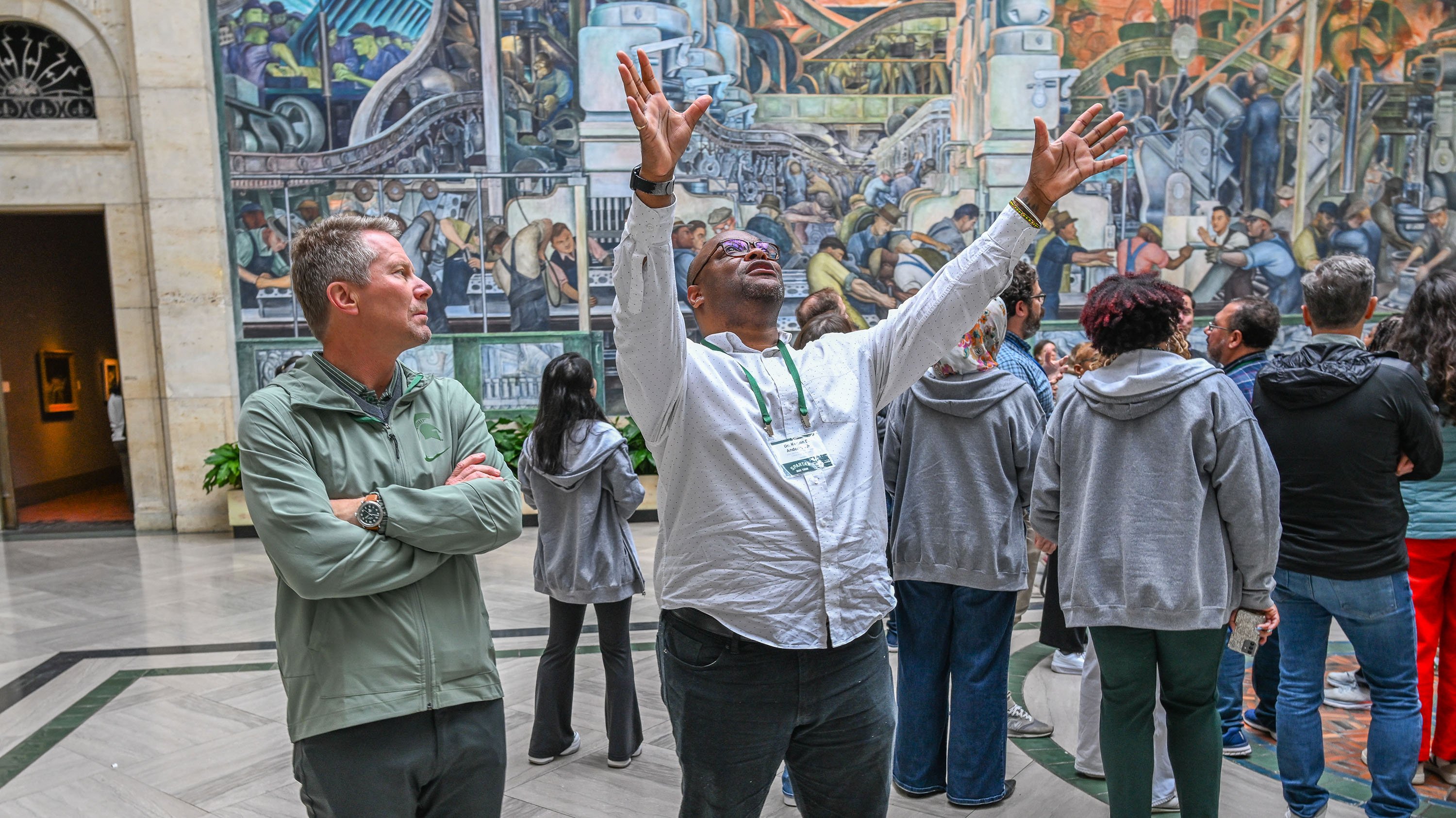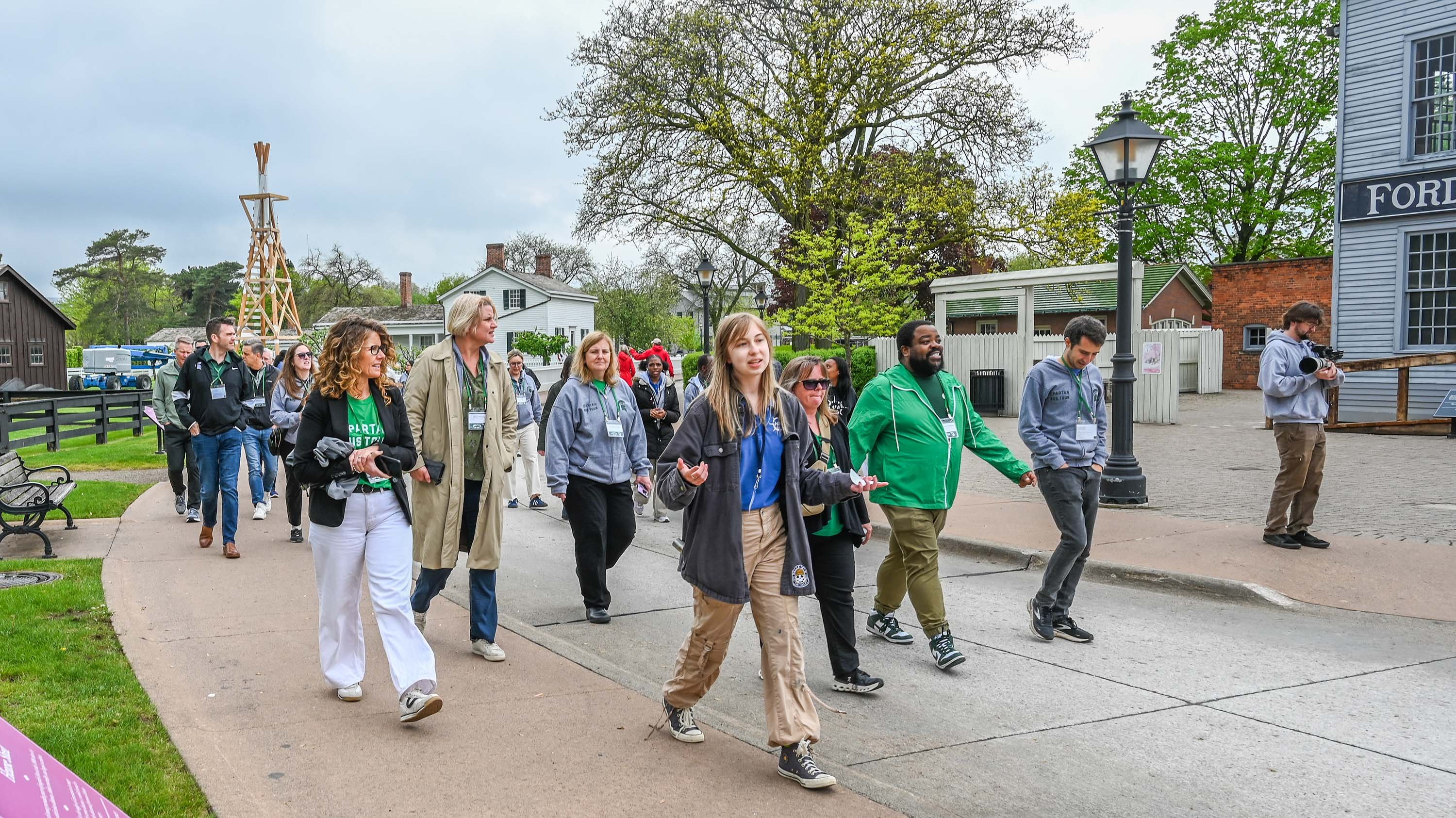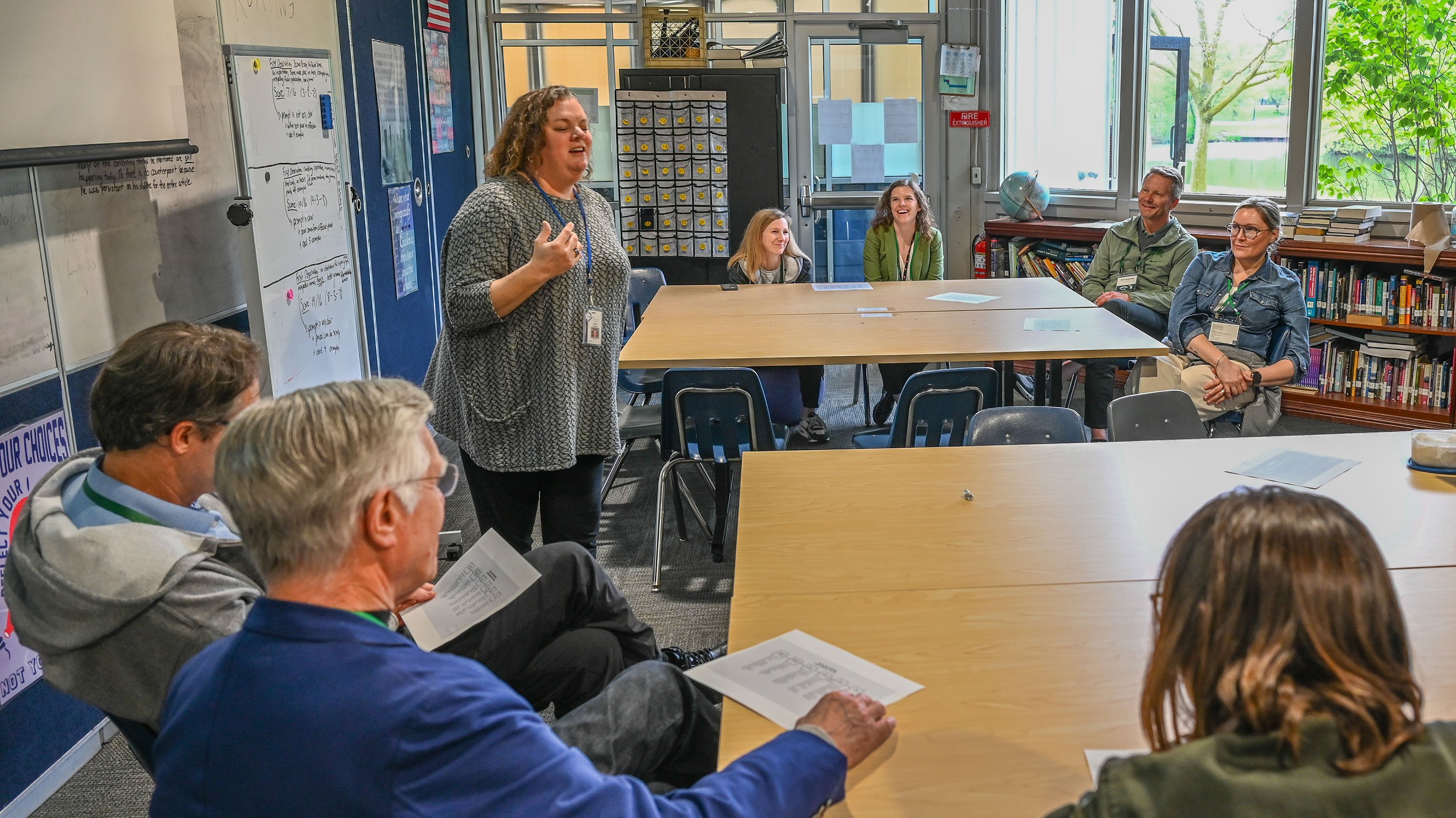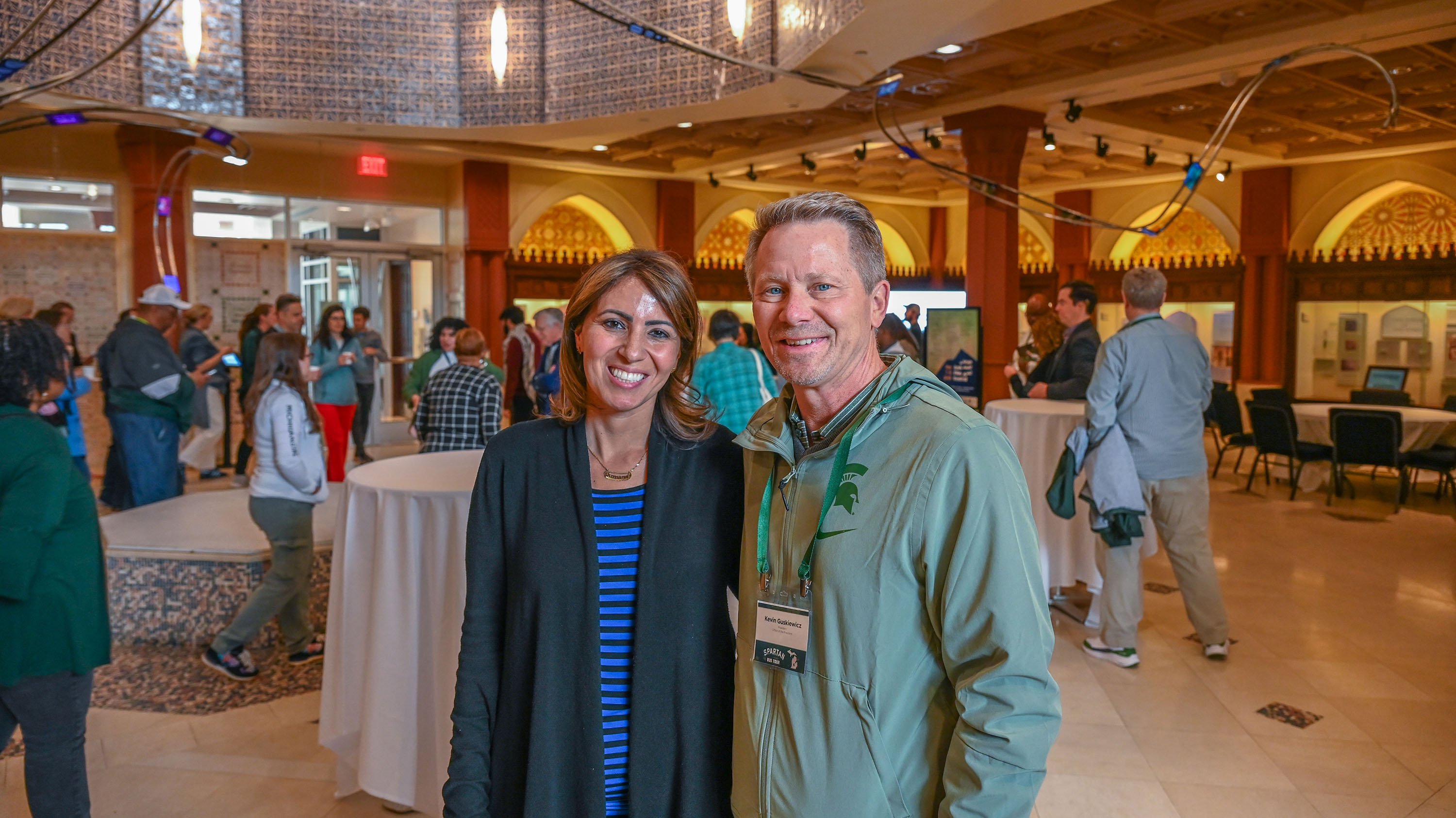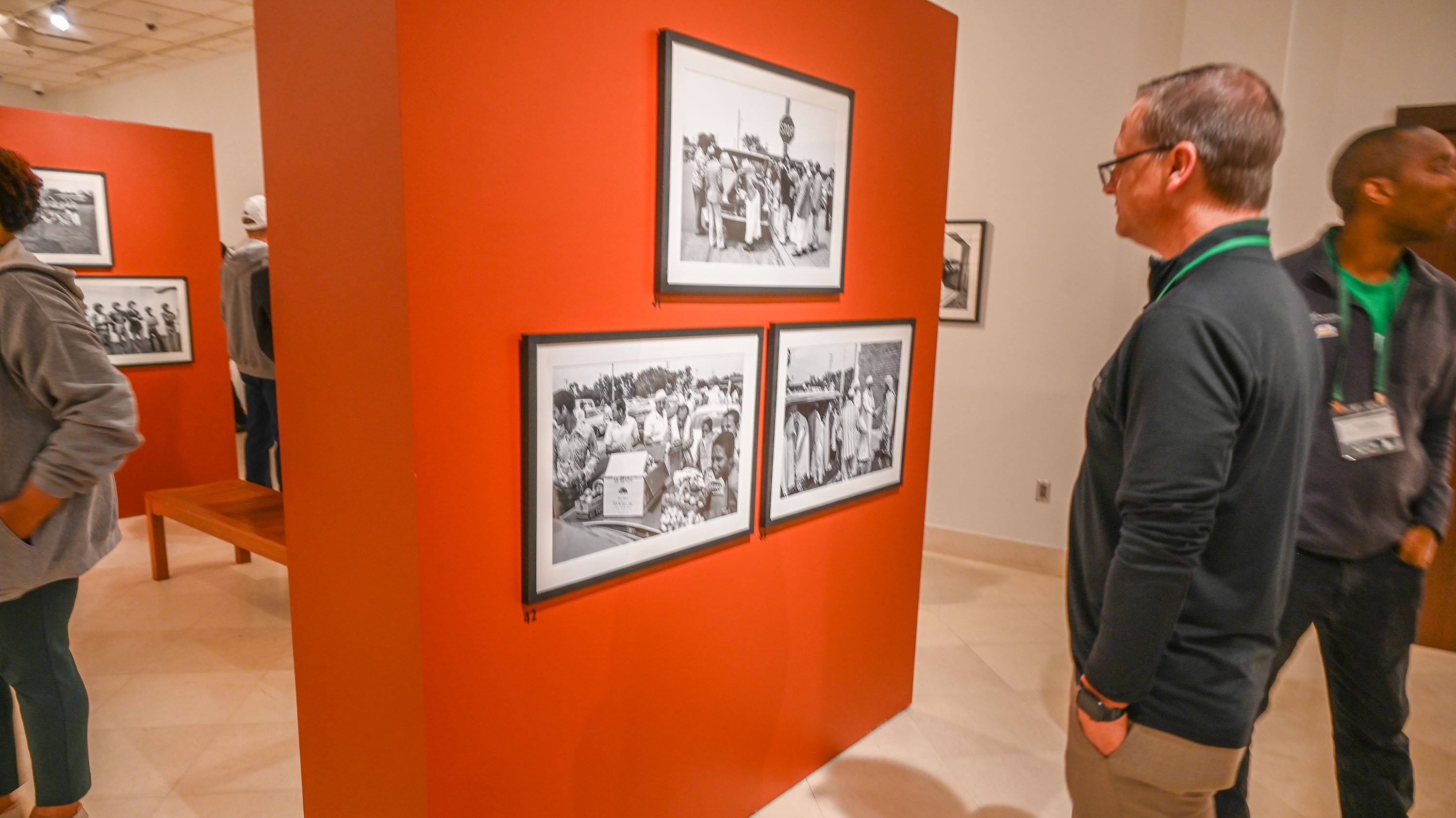Inspiring. Uplifting. Soulful. Authentic. These were some of the words that participants of the Spartan Bus Tour used to describe their immersive two-day, 254-mile trip through the Detroit metropolitan area May 5-6.
Sixty faculty and administrators from Michigan State University joined President Kevin M. Guskiewicz, Ph.D., at 14 stops throughout the region to learn more about the communities in Detroit and how MSU works with partners to support the city’s economic development, advance the arts, transform schools, improve health and protect the environment.
“Imagine embarking on a two-day learning experience on wheels, where your sense of institutional purpose is reawakened by the stories, struggles and triumphs of a city in motion,” said Marcio Oliveira, vice provost for Teaching and Learning Innovation at MSU. “This wasn’t just an off-campus journey — it was a call to action. As we witnessed both the depth and potential of MSU’s engagement with local communities, I was reminded of the power of education to shape lives and strengthen organizations.”
This edition of the Spartan Bus Tour offered a more focused opportunity to learn about a specific region following the success of its inaugural journey through 13 cities in central and western Michigan in October 2024.
Jump to: Day 1 | Day 2
Day 1, morning
Embracing resilience, honoring the past and building the future
The first stop on the Spartan Bus Tour was the Zekelman Holocaust Center in Farmington Hills, whose mission over the last 40 years has been to “engage, educate and empower by remembering the Holocaust.” Participants were greeted by CEO Rabbi Eli Mayerfeld.
“This visit with MSU comes at a pivotal moment in our history, where we are meeting the moment together and investing in teaching students and community members about the danger of hate and where it leads,” Mayerfeld told participants. “We have worked with many faculty members at MSU over the years on various projects, including on exhibitions, workshops and ethics trainings, and we hope to strengthen the ways that we work together into the future.”
Education coordinator Harry Smith led participants through several of the center’s recently renovated exhibitions, including the “Eternal Flame and Memorial Wall,” “Genocide in the East,” the “Anne Frank Tree and Garden” and more.
“Welcoming MSU faculty and administrators to the Zekelman Holocaust Center was deeply meaningful to me — not just as a proud Spartan, but as a Jewish student who once felt unseen on campus,” said Smith, who graduated from the College of Social Science in 2016 with a bachelor’s degree in history.
Many faculty members, like LeConté Dill, associate professor of African American and African Studies in the College of Arts and Letters, were deeply moved by the visit.
“We were immediately confronted with hard truths of state-sanctioned violence, discrimination, and xenophobia,” said Dill. “We were confronted with the knowing that, in many ways, this is still our present day. We were invited to remember resistance and coping.”
From remembrance to resilience, the bus traveled to northwest Detroit’s Riverdale neighborhood to visit the Detroit Partnership for Food, Learning and Innovation, or DPFLI, MSU Extension’s first and only urban agriculture center in the state. Surrounded by perennial fruit and nut trees, director Naim Edwards described how the center serves as both a living lab and a lifeline.
“Detroit has a lot of vacant land and people with untapped knowledge,” Edwards said. “Here, we’re building something that connects the two, giving people a way in. You don’t need a degree to grow food, to support your community, to be part of something.”
Edwards pointed to DPFLI’s youth training programs, MSU Extension workshops and research gardens — all designed to meet community needs and feed residents. He said that since its founding in 2017, the partnership has provided more than 2 million pounds of food to nearby Brightmoor Connection Food Pantry.
“This is MSU showing it cares about Detroit residents off-campus and in neighborhoods that are often overlooked,” he added.
The third stop on Day 1 brought the bus to the Shepherd and LANTERN, two spaces launched by Library Street Collective’s ongoing artistic commitment to Detroit’s Little Village neighborhood. Participants spent time perusing the grounds of the Shepherd, a historic church renovated into a gallery and community space that also boasts a bed and breakfast, two forthcoming restaurants, the Charles McGee Legacy Park, and a public skate park designed by Tony Hawk and artist McArthur Binion.
“There’s a lot of focus downtown when you think of Detroit, but I’m hoping that people on the bus are seeing some of the innovative and important efforts happening in the neighborhoods of the city,” said Anthony Curis, co-founder of the Shepherd and Library Street Collective. “The work that we do here is at the intersection of the needs of the community and the artistic talent that persists here.”
After eating a catered lunch from Michigan & Trumbull Pizza, participants toured LANTERN Detroit, a mixed-use warehouse space that is home to two nonprofits, including Signal-Return, a studio that preserves and teaches traditional letterpress printing, and Progressive Arts Studio Collective, a space dedicated to supporting artists with developmental disabilities and/or mental health differences to advance independent artistic practices and build individual career paths in the art and design fields.

